GATE CITY JET SET


































Price: $3.95 businessnc.com FEBRUARY 2023 STATE EMPLOYEES’ CREDIT UNION PIVOT CAUSES A COMMOTION CLASH OVER OYSTER FARMS | RUSSELL ROBINSON II LOOKS BACK | ROXIE WELLS ON RURAL HEALTH
Justin Outling, Glenn Gonzales and Gerald Walden step out front for our annual diverse leaders spotlight.



Hospital executive Roxie Wells describes challenges of rural care in a chat with Nido Qubein.
Russsell Robinson II tells how he wrote an essential book on securities law as he built a firm.


14 NC TREND


Greensboro lures boomerangs; Social districts rev the state’s downtowns; Scoring biscuits at ball games; What you missed from the N.C. Tribune.
80 GREEN SHOOTS
Robbins in Moore County benefits from an investing family.

28 ROUND TABLE: ECONOMIC FORECAST



Academic and business experts expect a modest downturn as North Carolina stays strong.
60 POWERING NC: POWER SHIFT
The state shows steady progress in making the critical switch to alternative energy sources.

68 COMMUNITY CLOSE UP: MOORE COUNTY

Moore County displays unusual resilience after an attack on the power grid led to global publicity.
COVER STORY
DIVERSE LEADERS
Profiles of a dozen Tar Heel executives and entrepreneurs making significant marks on their organizations and communities.
 BY COLIN CAMPBELL, EDWARD MARTIN, DAVID MILDENBERG AND EBONY MORMAN
BY COLIN CAMPBELL, EDWARD MARTIN, DAVID MILDENBERG AND EBONY MORMAN


SHELL SHOCK
North Carolina oyster farmers face pushback from critical beach property owners.
 BY EMORY RAKESTRAW
BY EMORY RAKESTRAW
TIME TO RETOOL?
Shifting strategy at the state’s big credit union raises debate over balancing member needs.
BY DAVID MILDENBERG
3 FEBRUARY 2023 February 2023, Vol. 43, No. 2 (ISSN 0279-4276). Business North Carolina is published monthly by Business North Carolina at 1230 West Morehead Street, Suite 308, Charlotte, NC 28208. Phone: 704-523-6987. Fax: 704-523-4211. All contents copyright © by Old North State Magazines LLC. Subscription rate: 1 year, $30. For change of address, send mailing label and allow six to eight weeks. Periodicals postage paid at Charlotte, NC, and additional offices. POSTMASTER: Send address changes to BUSINESS NORTH CAROLINA, 1230 West Morehead Street, Suite 308, Charlotte, NC 28208 or email circulation@businessnc.com. COVER PHOTO BY BERT VANDERVEEN Start your day with business news from across the state, direct to your inbox. SIGN UP AT BUSINESSNC.COM/DAILY-DIGEST. + DEPARTMENTS
SECTIONS
6
+ SPONSORED
4 UP FRONT
POWER LIST INTERVIEW
8 PILLARS OF N.C.
48 38 42
Creating community is as important for Business North Carolina as it is for small-town weekly newspapers that publish items about how Uncle Bob is visiting from California or Susie won this week’s bingo game at the senior center. I’m hoping there are still a few Tar Heel papers that carry such fare.
It can be harder, however, at a statewide publication that tries to keep readers in Manteo interested in what’s happening at some enterprise in Murphy, or vice versa. But we keep trying through the magazine, our Daily Digest newsletter, expert roundtables and other events. It’s also why we’re excited to continue a February tradition of spotlighting some outstanding diverse leaders from across the state, hoping to make clear that inclusion isn’t just a slogan in North Carolina.
Everyone we’ve cited over the years is making an impact on their business or organization, while also playing key civic roles. Most have been folks who rarely receive media attention despite their considerable in uence. e importance of community is re ected in our cover photo. Lawyers Gerald Walden and Justin Outling and Jet It CEO Glenn Gonzales work within a block of each other in downtown Greensboro. But they were barely acquainted before Creative Director Peggy Knaack organized a photo shoot of the trio.
By chance, the gathering occurred within a block of the segregated Woolworth’s drugstore where Ezell Blair Jr., David Richmond, Franklin McCain and Joseph McNeil staged a historic sit-in in 1960. It became a pivotal moment in American history, now memorialized by the International Civil Rights Center and Museum.

Walden, Outling and Gonzales may not become as famous as the Greensboro Four, but our stories describe contributions that many would have found unbelievable in 1960.
ey are three busy guys, but photographer Bert VanderVeen’s cover photo gives them the excuse to stay in touch as they climb corporate and civic heights in the years ahead.
Writing about a credit union ensures a snoozer for BNC readers, a wisecracker friend of mine insisted when I mentioned the story that starts on Page 42. But we failed if the story isn’t compelling, given how it touches on key issues a ecting many businesses, not just the $54 billion State Employees' Credit Union. ose elements include debate over CEO and boardroom succession; fairness and equity in how to treat customers; the role of technology in corporate strategy; and access to credit in rural areas.
Sources for the story repeatedly emphasized SECU’s status as a “gem” of North Carolina. Its 2.7 million members represent about a quarter of the state’s population. ere’s nothing comparable across the U.S. credit union industry.
SECU’s success and growth over 85 years is made even more amazing by its strategies of zigging when the rest of the nancial services industry was zagging.
SECU’s board and relatively new CEO are now pushing the institution to operate more like other large industry peers, while improving on its corporate culture. Some SECU traditionalists, who built the secondlargest U.S. credit union into a powerhouse in an unconventional way, are asking, “Why break something that isn’t broken?” Let us know what you think.
PUBLISHER
Ben Kinney bkinney@businessnc.com
EDITOR
David Mildenberg dmildenberg@businessnc.com
ASSOCIATE EDITORS
Colin Campbell ccampbell@businessnc.com
Cathy Martin cmartin@businessnc.com
SENIOR CONTRIBUTING EDITOR
Edward Martin emartin@businessnc.com
SPECIAL PROJECTS EDITOR
Katherine Snow Smith
CONTRIBUTING WRITERS
Cassie Bustamente, Jonathan Bym, Vanessa Infanzon, Brad King, Ebony Morman, Alyssa Pressler, Emory Rakestraw
CREATIVE DIRECTOR
Peggy Knaack pknaack@businessnc.com
CONTRIBUTING PHOTOGRAPHERS
Bert VanderVeen, John Gessner
MARKETING COORDINATOR

Jennifer Ware jware@businessnc.com
ADVERTISING SALES
ACCOUNT DIRECTOR
Melanie Weaver Lynch, eastern N.C. 919-855-9380 mweaver@businessnc.com
ACCOUNT MANAGER AND AUDIENCE DEVELOPMENT SPECIALIST
Scott Leonard, western N.C. 704-996-6426 sleonard@businessnc.com



CIRCULATION: 818-286-3106
EDITORIAL: 704-523-6987
REPRINTS: circulation@businessnc.com

BUSINESSNC.COM
OWNERS
Jack Andrews, Frank Daniels III, Lee Dirks, David Woronoff, in memoriam Frank Daniels Jr.
PUBLISHED BY Old North State Magazines LLC
David Mildenberg at dmildenberg@businessnc.com.


Contact
4 BUSINESS NORTH CAROLINA
PRESIDENT David Woronoff VOLUME 43, NO. 2
COME TOGETHER
UP FRONT David Mildenberg

LIST INTERVIEW
RURAL ADVOCATE
What are some special challenges for rural hospitals?
Roxie Wells is president of Raeford-based Hoke Hospital, which is one of eight hospitals owned by Fayetteville-based Cape Fear Valley Health. She’s also past-chair of the N.C. Healthcare Association, which represents 135 hospitals, and just finished a three-year term on the American Hospital Association’s 27-member board. The AHA represents the nation’s nearly 5,000 hospitals.
Wells says she used her national role to advocate for 40 million Americans who live in rural communities. “My passion is rural health,” she says.


Wells is a graduate of Fayetteville State University and East Carolina University’s Brody School of Medicine in Greenville. She joined Cape Fear Valley as a family practice physician in 2010, then took her current post in 2014. This story includes excerpts from Wells’ interview and was lightly edited for clarity.
When you think about technology, you don’t have broadband in some areas and you have to figure that piece out. When you talk about the workforce and who will be the EMS workers, who will be the nurses and the workforce, it’s a huge challenge. But the people who live in the communities tend to wrap their arms around you. They tend to make sure that you have things that you need. There’s a population of professionals who feel that tug and feel that call to a rural community. The people surmount those challenges. It is an amazing experience to work in that environment.
How do you attract medical professionals to rural North Carolina?
It really is the community and how you connect individuals to the community. Definitely education is extremely important and the ability to receive health care for their families. When we are looking for work force, we really want individuals, particularly in rural communities, who are community oriented, who aren’t afraid to get out and become a part of the community.
What does a hospital president do all day?
For me, it really is about supporting the people that take care of our community. No, my day does not start at 10:30. It actually starts at about 5 a.m., getting reports from nursing, and determining if anything happened during the night that we should be concerned about. We are making sure that we are there smiling as employees are entering the hospital and checking on patients. I spend quite a bit of my time interacting with people, whether they are employees or patients or staff members.
with Nido Qubein at High Point University
6 BUSINESS NORTH CAROLINA
Hospital executive Roxie Wells joins President Nido Qubein in Business North Carolina’s Power List Interview feature, a partnership with High Point University spotlighting some of the state’s most influential leaders.
What are your key revenue sources?
It typically depends on the community in which you live. We happen to be a safety-net hospital which means that a large percentage of our revenue is from government payers, whether it’s Medicaid or Medicare. We do have private payers which would be our insurance companies like Blue Cross or Aetna. We have a pretty significant self-pay population, but you don’t really collect a lot from self pay. Most safety-net hospitals throughout the state are probably about 40% to 50% government payers, another 20% to 30% private pay and 15% to 20% self-pay.
What is the status of Medicaid expansion?
We are one of 12 states that has not expanded Medicaid yet. We have come very very close working with the Senate, the House and the governor and our hospitals.
Why is Medicaid expansion important?
We have about 500,000 people who are uninsured. They don’t make enough money to purchase insurance, but they make too much money to actually be on what we consider regular Medicaid. So we want to make sure we are able to insure those people and so if we expand Medicaid, then they would be covered as well.
What are the impediments?
From a legislative standpoint, the concern was that the federal government would cover it for five years, and then after those five years would the state be responsible for paying? Our General Assembly members want to be fiscally thoughtful about North Carolina, and so they were concerned about that. But what we have seen over the years is that the federal government continues to cover it. Our failure to pass Medicaid expansion has been, and will be in the future, a detriment to hospitals across our state.
So how does that affect Hoke County Hospital?
I’m a physician by profession, and I love taking care of people. When people don’t have access to health care because they’re unable to pay, then that’s a frustration for me. And so when I think about where we are with the expansion of Medicaid and why we’re having a difficult time, I think about the 500,000 people who don’t have care. When they put off that care, then they end up sicker when they get to our emergency department.
You were chair of the North Carolina Healthcare Association — a big shot!
I don’t look at it like that. I look at it as a way to advocate for people and to produce policies that will be helpful to the citizens of North Carolina. And you know, I’m very fortunate, I used to think that health care was my passion, and I learned pretty quickly that people are my passion and health care is how I get to live that passion.
Do rural hospitals have enough resources?
There’s always the need for additional resources, just because of the population that you serve. We know that people who live in rural communities tend to have more co-morbidity illnesses, so their care is a little more difficult. We are concerned about behavioral health issues, which are exacerbated in rural communities. That’s why the advocacy piece for me has been so important for me. We’re fortunate in North Carolina that our General Assembly understands the needs of rural communities.
What would you tell business leaders about rural hospitals?
Well, if you have means of philanthropy, recognize that those rural hospitals could use those philanthropic dollars. As new industries come to North Carolina, connect with those communities and help ensure that those hospitals are sustainable. A lot of those hospital buildings were built 60, 70 or 80 years ago and a lot of them are obsolete. As the General Assembly looks at tax incentives and those types of things, think about hospitals and rural communities.
What’s the advantage of being part of a larger hospital group?
I get to tap into things that are systemwide. Some of our independent hospitals don’t necessarily have that. When you talk about the size, I like to think of small hospitals as a speed boat, and larger hospitals, I like to think of them as cruise ships. And, you know, speed boats can move pretty quickly. It’s easier to train staff, so when you want to make changes, it’s easier to do that. If you’re going to make a change in a larger hospital, you’re really at cruise ship speed.
Are hospitals receiving less revenue from COVID illness?
Our hospitals in North Carolina, and across the country, are seeing reductions in revenue. But we’ve seen increases in workforce expenses and inflation from supplies or what have you. The revenue is not keeping up with the expense, which means you have to start thinking about whether to cut services. I think that our hospitals will have a long recovery. We are not going to recover in a year, or in two years. We don’t raise prices like other industries do, you know.
Has COVID led to more remote work in health care?
One of the things that has come out of COVID is what we are seeing the transformation of health care. We have people who do patient care remotely including our hospitalists at night, who are not in the hospital. The nurses connect with them via telehealth and they take care of patients.
Transformation in health care is going to happen more rapidly than we are used to. We have nurses and physicians who work remotely. But, of course, we will always need people inside the building taking care of patients.
What do you see for the future of health care?
North Carolina has some of the best medical education in the country, if not the world, because we have universities with longstanding traditions of training doctors, nurses, physical therapists and researchers. So North Carolina has played a huge role in health care for the country. I would like for us to expand Medicaid. That would be helpful for us.
There’s going to be a transformation of health care with new entrants such as Walgreens, CVS and Amazon. Look at how those companies are growing and connecting with primary care. There’s a definite need for hospitals and insurers and new entrants to really work together to provide care for communities. We wonder why some of the smaller countries in the world have better health care and they spend less than we do. When we look at that, it’s social determinants of health, it’s access, it’s those types of things. ■
7 FEBRUARY 2023
RUSSELL ROBINSON II
He wrote the book on North Carolina securities law, while helping create a powerhouse firm and mold key institutions across the state.
By Vanessa Infanzon
An encounter with retired attorney Russell Robinson II leaves a lasting impression. ose who know the famed Robinson Bradshaw law rm co-founder say his attention to detail wasn’t limited to briefs and motions. Partner Caroline Sink remembers early in her career when a woman in administration retired and Robinson made sure she received a mink coat for her years of service to the rm.
“I was really struck by his thoughtfulness about her and the arrangements for her retirement celebration,” Sink says. “When it mattered, and it wasn’t just cases or client matters or strategy for the Duke Endowment or the Morehead Foundation, it was people that were here in this rm. He was paying attention to what was important.”
Robinson, 90, and the late Robert Bradshaw, both Duke Law School graduates, established the Charlotte law rm in 1960 with J. Carlton Fleming, and later Robin Hinson. e rm has o ces in Chapel Hill, Charlotte, Raleigh and Rock Hill, South Carolina with more than 160 attorneys.





From the start, Robinson Bradshaw’s approach to managing the practice was di erent than that of most peers. “Russell wanted a rm where everyone is heard and we share basically everything,” says Robert Harrington, a Robinson Bradshaw partner. “We don’t track billable hours for purposes of compensating ourselves or rating ourselves. e idea being, clearly coming from Russell,

8 BUSINESS NORTH CAROLINA
PHOTOS
COURTESY OF RUSS ROBINSON AND ROBINSON BRADSHAW
the client is always first, and at least incidentally, it’s a much more pleasant way to practice law without having pressures that can take away from the enjoyment of the practice.”
Robinson wrote “Robinson on North Carolina Corporation Law” almost 60 years ago and published six more editions, the latest in 2003. In the late 1990s when Allen Robertson was a new partner, he saw how Robinson worked from 6 p.m. to 11 p.m. every evening to produce the next version of the book.
Robertson suggested the firm use the marketing slogan, “We wrote the book on corporate law,” in the company’s first advertising campaign. He proudly presented the idea to Robinson, who promptly killed it.
“To know someone or to work with someone and see how excellent, how hard-working they are, how great they are in every respect,” says Robertson, now the firm’s managing partner. “And yet, at the same time, to be so humble to say, even though he’s the one who spent five years of his life reading 800 or 900 North Carolina Supreme Court decisions on corporate law going back to the 1790s, ‘I couldn’t possibly take credit for that.’ Nobody else did that; he did that.”
Robinson sat on state committees that helped draft key corporation laws periodically over four decades, then served on the Commission for the Future of Justice and the Courts in North Carolina from 1994 to 1998. He was a board member for Duke’s law school, UNC Charlotte and Johnson C. Smith University, and
a Duke Endowment trustee for more than 30 years.
Former Charlotte Mayor Richard Vinroot practiced with Robinson for more than 40 years until his partner’s retirement in 2013. Bob Bradshaw was known for his antics and one year, he anonymously sent Robinson an ugly clock wrapped in an ornate package and accompanied by a letter. The note made it clear Robinson had done exemplary work for the company and the clock should be hanging behind Robinson’s desk when the gift giver visited. It was signed with an indecipherable name.
Robinson worried for weeks if the clock came from Charlotte investor C.D. “Dick” Spangler or some other major client. He spent weeks trying to figure it out until Bradshaw finally told him the truth. “Bob Bradshaw was somebody who loved to pull tricks and tease,” Vinroot says. “He would do that with Russell; nobody else would dare do so. They were the dearest of friends and really fun to be around.”
Sally Dalton Robinson, Robinson’s wife, has been by his side since 1953. The couple played key roles at The Duke Endowment, Levine Museum of the New South, Robinson Center for Civic Leadership and Robinson Hall for the Performing Arts at UNC Charlotte. “I don’t think of Russ without thinking of Sally,” Vinroot says. “She has been the inspiration for so many things in our community for so long. That they met, fell in love and got married was a great thing for them but also for the city of Charlotte.”

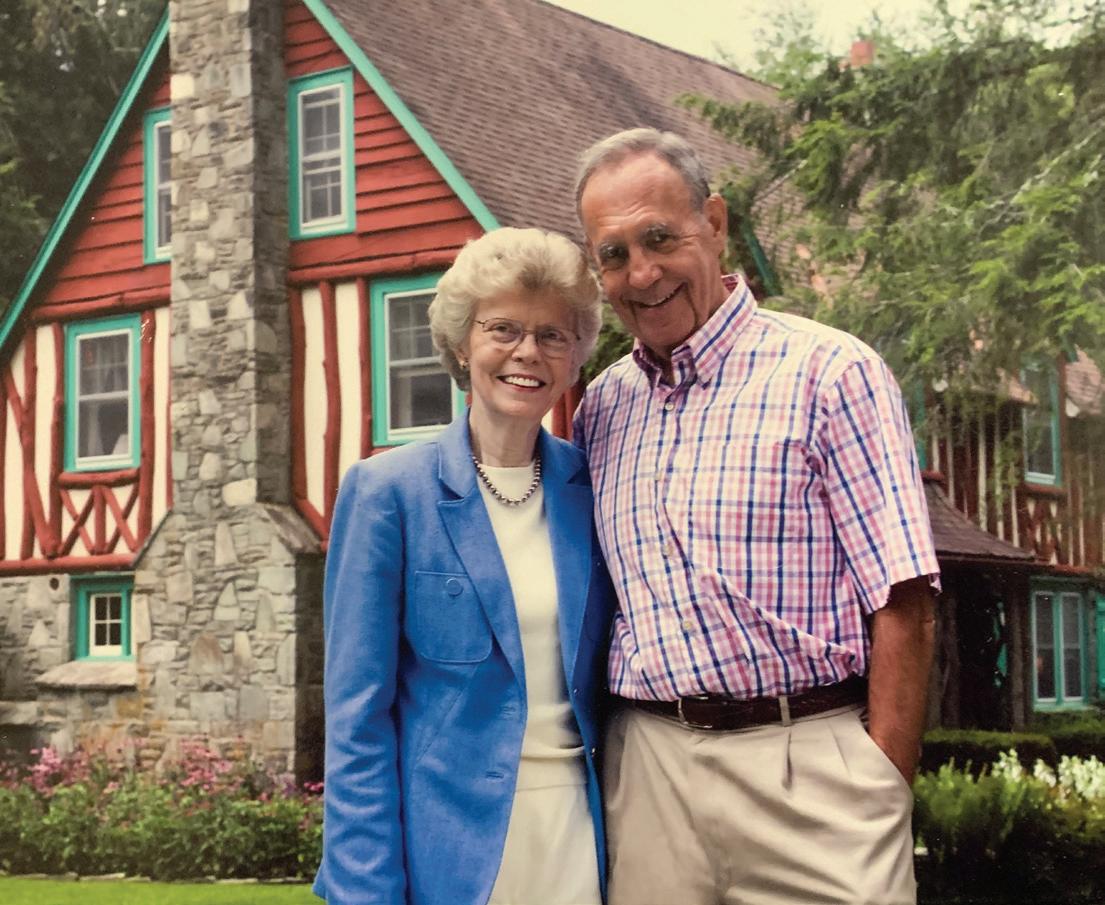
9 FEBRUARY 2023
Russell and Sally Robinson played key roles at many N.C. institutions, including UNC Charlotte. The couple worked closely with former chancellors Jim Woodward (far left) and Philip Dubois (right).
Comments are edited for length and clarity.

e rst edition of “Robinson on North Carolina Corporation Law” was published in 1964, and I undertook the project at the urging of (Elvin) Latty, then dean of the Duke Law School. e North Carolina Business Corporation Act had been passed in 1955 and took e ect in 1957, the year a er I graduated from Duke Law.



It was quickly apparent that the statute had several ambiguities and le some important questions unanswered. I started work on the book sometime in 1959. e book took ve years to complete. Sally (Robinson) reminds me that every night a er dinner, and every weekend, I would sit in the rocking chair in our bedroom and write, surrounded by boxes of led index cards that detailed the current case and statutory law I was working with. I never could have nished that book without her support and understanding.
When we started the rm, our idea was to build a law rm that was committed to professionalism, excellence and teamwork. We wanted to attract lawyers who were committed to those same ideals. In the spirit of collegiality, mutual trust and respect, we decided against reporting to each other the billable hours recorded by any lawyer. Likewise, we decided against “origination credits,” removing any barrier to teamwork. From the outset, we mentored young lawyers in honing their legal skills so that they could assume increasing responsibility both for representing the rm’s clients and acquiring more clients for the rm.
ere’s an art to practicing law that bene ts both your client and the jurisprudence necessary for economic ourishing. It requires understanding not only your client’s needs and objectives, but also those of his or her adversary. O en, your client’s long-term interests are best served by allowing room for some satisfaction of the needs of the opponent. Striking the right balance on this requires discretion and skill. It’s been rewarding trying to get that balance right. A scorched-earth approach rarely serves the client or the common good in the long run.
Mr. Duke signed the indenture creating [ e Duke Endowment] in the sunroom of his Charlotte home in 1924. I grew up on Edgehill Road, across the park from that home. Mr. Duke’s grand fountains had been turned o before my time, but my parents spoke of sitting on their front porch and feeling their spray. at house, and Mr. Duke’s benevolence, have been a force for good in my life and in the state I love.
Education, childcare, health care and the rural Methodist church — Mr. Duke identi ed these as the bedrock of hope for the future ourishing of the Carolinas. Almost 100 years later, we see the wisdom and prescience of the man. I know I cannot overstate the great joy and enrichment I’ve gained from my long association with the sta and trustees of the endowment. I’ve gained far more than I’ve given on that front. ■
10 BUSINESS NORTH CAROLINA
The Robinsons are shown with former Secretary of State Condaleeza Rice and Robert Albright, a former president of Johnson C. Smith University in Charlotte.

MEASURING THE WORK THAT IMPACTS THE SOUL OF A COMPANY

There has never been a time during Johnathan Kearney’s career when he has not been drawn to data. For nearly 25 years, the self-described data geek leveraged data and its increasingly abundant and sophisticated capture mechanisms to lead risk management and credit risk reporting functions for some of the largest banks in the Southeast before taking on his current dataintensive role as business analytics group manager for PNC’s Corporate Responsibility Group.
“I have always had a deep appreciation for data, what it can tell us and how it can help us develop solutions to business challenges,” says Kearney, a North Carolina State University graduate who joined PNC Bank through its acquisition of RBC Bank (USA) more than one decade ago.

Kearney’s unrelenting commitment to accuracy and data integrity proved to be integral to the success he found in his former role managing balance sheet analytics and modeling for PNC’s business-critical enterprise and credit risk reporting team. Meanwhile, his passion for mentorship and employee development helped shape a pipeline of PNC leaders, while his membership in the North Carolina Bankers Association’s Diversity, Equity and Inclusion (DE&I) Council is helping create impact within the financial services landscape of his home state. So it should come as no surprise that when PNC’s Corporate Responsibility Officer was searching in 2020 for a talented visionary to oversee data analytics and reporting for PNC’s increasingly extensive and far-ranging community commitments, he turned to Kearney.
A pronounced focus on corporate responsibility and its measurement was not at all new for PNC at the time of Kearney’s appointment; the bank has consistently produced data to quantify its community commitments and earn an 'Outstanding’ Community Reinvestment Act (CRA) rating in every performance evaluation issued since enactment of the CRA more than 40 years ago. But when Kearney joined
PNC’s Corporate Responsibility Group in 2020 against the backdrop of immense change, opportunity and growth within the company, the importance of elevating awareness, accountability and transparency for corporate responsibility efforts had never been more important.



Contributing to the magnitude of that consequential period was PNC’s impending acquisition of BBVA (USA), which when completed in 2021 resulted in a significantly expanded geographic footprint and employee base. Accompanying this acquisition was PNC’s development of an ambitious $88 billion, four-year Community Benefits Plan, designed to create meaningful – and measurable – impact for low- and moderate-income individuals, communities and people of color through financing for residential mortgage and home equity lending, small business loans, community financing loans and investments, and additional charitable giving.
“During the development of the Community Benefits Plan, there was no question that data would play a central role in defining, quantifying and communicating the company’s deployment of capital and resources to deliver on its commitments, while providing visibility to tangible outcomes of its nationwide corporate responsibility efforts,” says Kearney. “A corporate responsibility program or initiative is about so much more than compliance or checking boxes. I heard our CEO reference this as the work that impacts the soul of a company. And data is integral to understanding how and where we can most effectively maximize our impact, setting goals, measuring progress and shining a light on the stories that emerge from our community commitments.”
While Kearney’s colleagues may synonymize his work with the sophisticated reporting dashboards and data visualizations for which he has become known, these finished deliverables represent just a small fraction of what his role entails. “I spend the majority of my time exploring, researching and discussing with business partners the
SPONSORED SECTION 12 BUSINESS NORTH CAROLINA
Local PNC leader reflects on data’s essential role in a corporate responsibility program.
This is the twenty-fourth in a series of informative monthly articles for North Carolina businesses from PNC in collaboration with BUSINESS NORTH CAROLINA magazine.
challenges and opportunities the company is looking to address, as well as relevant trends and indicators that provide context for those challenges and opportunities,” he says. “Only then do I step away and use data to address the objective or question at hand.”

As digital and information technology innovations lead to increased availability and access to data, Kearney emphasizes that the business imperative of data stewardship cannot be overstated – and that more data doesn’t always translate to better data. “When leveraging data for measurement and reporting, it is essential for organizations to preserve the integrity of that data by understanding and respecting its intended use – and by being transparent about methodology,” he says.
For organizations in the process of implementing and enhancing corporate responsibility programs, Kearney encourages leaders to be intentional about developing measurable objectives that can be shared with their employees for accountability and transparency. “Once a corporate responsibility program is put in place, employees want to see it continue,” he says. “Incorporating data-driven metrics from the outset – and then regularly reporting on progress –will go a long way when it comes to demonstrating impact and integrity.”

ADVANCING CORPORATE RESPONSIBILITY AND DE&I WITHIN N.C.’S BANKING INDUSTRY

Beyond the scope of Kearney’s impactful work at PNC, he contributes his time and talent to the North Carolina Bankers Association’s DE&I Council, a standing committee formed in August 2020. Kearney and the local banking professionals who comprise the collective bring their unique experiences, learnings and perspectives to help the NCBA provide resources for member organizations to leverage in their respective DE&I programs and initiatives.
“I believe we can all agree that strengthening DE&I is a priority within the banking industry,” says Kearney. “The Council is playing a key role in facilitating this work in North Carolina through its pillars of action, which include workforce development and hiring, DE&I strategy and education, and community partnerships and financial literacy.”
FOR MORE INFORMATION, PLEASE VISIT WWW.PNC.COM/CSR
13 FEBRUARY 2023 REGIONAL PRESIDENTS: Weston Andress, Western Carolinas: (704) 643-5581 Jim Hansen, Eastern Carolinas: (919) 835-0135 PNC and PNC Bank are registered marks of The PNC Financial Services Group, Inc. (“PNC”). ©2023 The PNC Financial Services Group, Inc. All rights reserved.
WELCOME BACK
Greensboro wants folks to return home.
By Cassie Bustamante
In2021,ActionGreensborolaunchedBoomerang Greensboro,aprogramthathashelpedmorethan200people returntothecitythathadoncebeentheirhome. einitiativeis llingtheGateCitywithcommunitymemberswhocanhelpit prospercreativelyandeconomically.

“Greensboro’sasmallenoughtownthatyourunintopeople you’vehelpedmakethoseconnections,”saysCecelia ompson, executivedirectorofActionGreensboro.“Toseethemsettled, happyandthrivinginGreensboro,that’sthegoal.”
CassieBustamante,managingeditorofO.Henrymagazine, talkedwithfour“boomerangs”aboutwhatluredthembackand theirhopesanddreams.O.Henryisasisterpublicationof BusinessNorthCarolina
APRIL ALBRITTON
The assistant to Greensboro’s city manager has big ambitions for her favorite city.



April Albritton stepped onto UNC Greensboro’s campus as a prospective student and suddenly understood what love at rst sight was all about. A er growing up in Charlotte, she knew the lush campus, friendly students and accepting faculty would make her feel at home for the next four years. Upon graduating in 2006, this young professional craved change and cultivated a career in college athletics that would take her all over the country. But three years ago, Albritton returned to Greensboro to plant roots without letting go of her sense of adventure.
As a UNCG undergraduate, Albritton managed the men’s basketball team for three years while studying kinesiology. She doesn’t consider herself an athlete, but loves that sports bring people together no matter their socioeconomic background. e team became her second family and some of the players remain her best friends today.
When an opportunity to be assistant director in a Seattle university athletic department came her way, she took the leap. at “rainy and gloomy” city le an imprint on her heart, but she eventually le for a job in Charleston, South Carolina, followed by Long Island, New York.
14 Demographics 18 Entertainment 20 Marketing 22 Public affairs 24 Statewide
14 BUSINESS NORTH CAROLINA NC TREND ›››
Demographics
Photography by John Gessner
When her dad got sick, Albritton moved back to Charlotte, which led her to a fundraising position for a Carolina Panthers player’s nonprofit.
Four years after her return to North Carolina, UNCG called and offered her a sports marketing position. “I absolutely wanted a chance to go back to the place I love that started everything in my life.”
Shortly after her return, she bought her first home, citing Greensboro’s housing affordability. “I’m making a commitment to stay down South, to stay in North Carolina,” she says. After two years as director of Spartan Club, Albritton took the position of assistant to Greensboro City Manager Taiwo Jaiyeoba (TY-woh JAH-ye-aw-bah). A mutual friend connected them after he relocated from Charlotte last year.
Sports remains a huge part of her life and she holds tight to the dream of one day running an NFL team or becoming a conference commissioner. For now her “passion project” is seeing Greensboro develop into a dynamic creative, cultural and economic magnet.
Albritton finds Greensboro far from dull. She cites lunchtime walks to LeBauer Park, a steady stream of shows at the Tanger Center, UNCG athletics, giant chocolate chip cookies from Revolution Mill’s Black Magnolia Southern Patisserie and live jazz during Wine Wednesday at Double Oaks B&B.
The 2022 N.C. FolkFest marked a defining moment. Headliner George Clinton was the favorite artist of her late father. “I actually caught the sunglasses he was wearing during the concert, and then snuck backstage and got a picture, too . . . These are the things you can do in Greensboro.”
Albritton is excited for more to come. “My commitment is to watching Greensboro grow,” she says. “I want to stick around and be part of that before I say, ‘What’s next?
Ethan James knows what it means to be a one-man show. When it comes to content creation, scripting, filming and editing for his successful YouTube channel, The Honest Carpenter, everything you see has been done using only his own two hands. His online community consists of more than 674,000 subscribers. When it came time to establish a base for his operations, he heard the siren of his alma mater calling him back.
At age 13, James began working for his builder-carpenter father in the Raleigh area. Even with the trade running deep in his veins, he vowed to never become a carpenter. He also recalls once telling a friend, “If there’s one thing I can absolutely swear to you up and down, it’s that I will never have a YouTube channel — ever.”

In 2000, James began attending UNCG, where he majored in English. He worked at the defunct Borders’ chain of bookstores while still working for his dad during breaks. “I’m book obsessed,” laughs James. “In my ideal life, I’d be an author, not a video person.”
His love of books led him into McKay’s — then Ed McKay Used Books & More — to look for work after graduation. McKay knew he might need someone with construction skills. Sure enough, the burden of hefty textbooks collapsed a set of bookshelves. James made repairs and “pretty soon they pulled me off the sales floor and I did handyman stuff for them for a few years.”
With that experience under his tool belt, James returned to the Raleigh area for seven years as a carpenter. He also teamed up with his father to create a consultancy business and started making videos, leading to The Honest Carpenter channel. “I never intended any of this. It was an accident — a fortunate accident.”
With a career almost entirely online, James can live almost anywhere as long as he has studio space, which he found at The Nussbaum Center for Entrepreneurship in Greensboro. He praises the city’s community feel and welcoming energy. “There’s just a vibe here and I haven’t been able to find it anywhere else, so I came back.”
These days, he’s creating videos to speak out about the missing next generation of builders. He’s distraught about the lack of messaging reaching younger audiences. “There is no Bob the Builder anymore [after the TV’s cancellation.]”
ETHAN JAMES
James, who has published five fantasy books for kids already, has a plan to solve that problem. He introduced a cartoon character — James the Honest Carpenter — on his show with a goal of finding a publishing partner to create books that “help kids become aware that the world they’re walking in was actually built by someone.”
15 FEBRUARY 2023
A YouTube carpenter constructs a home base in Greensboro.
BRANDI NICOLE JOHNSON
As a little girl growing up in Butner, Brandi Nicole Johnson was clear about what she wanted from life, to the point of planning her own birthday parties a year in advance. The natural leader with a strong sense of self first landed her in Greensboro in 2005.

Johnson’s college search included “really weird requirements” including not having to share a bathroom. UNCG ticked off many of her boxes, although she didn’t get a room to herself. She joined a friend, who was a fellow Girl Scout.
During her senior year at UNCG, Johnson had a work-study job with the National Conference for Community and Justice of the Piedmont Triad, which launched her career in leadership development.
She later became membership services manager for Girl Scouts Carolinas Peaks to Piedmont. She’d grown up in the organization and credits it with helping her realize the importance of leadership development.
“It’s in the [Girl Scout] commitment of making the world a better place,” says Johnson, “and I think for the world to be a better place we need to have better leaders.”
After a year-and-a-half at Girl Scouts, her “dream job” opened up at Greensboro’s Center for Creative Leadership. She didn’t land that role, but the hiring manager told her about another position that hadn’t been posted. She got the job and spent several years at the famed center before leaving for an executive director position in her hometown.
It turned out to be her “most painful career experience,” prompting her exit. “I was tired, so I took four months off.” She watched Dr. Quinn, Medicine Woman, binged on Chick-fil-A waffle fries and finally said to herself, “Brandi, you need a job. You gotta figure this out.”
Johnson founded her people development brand, Estella Elaine (named after her grandmothers). She’s also worked for Red Hat, WeWork and DoorDash, and took on an on-call role at the Center for Creative Leadership.
When a potential relocation to New York for a corporate job didn’t come to fruition, Johnson weighed her living options and returned to Greensboro. She cites the competitive cost of living as a big draw. “The people here have a different vibe. There’s a warmth that I love.”
In 2021, Johnson purchased her first house, which she jokes that she never needs to leave, because so many of her favorite restaurants will deliver to her front door.
As a bonus, the Gate City is ripe with opportunity for Johnson to put her skills to work. “I can see myself becoming more of a philanthropist, getting involved in venture and whatever that looks like here, really thinking about how we invest in talent development and growth in a meaningful way.”
16 BUSINESS NORTH CAROLINA NC TREND ›››
Demographics
The UNCG grad and leadership development pro finds that all roads lead back to Greensboro.
Like many young people born and raised in one place, Elijah Cone couldn’t wait to venture out upon graduating from Greensboro Day School in 2010. After living in New York and Los Angeles as he started a successful career in digital media, he ultimately chose to return to his childhood roots for lifestyle opportunities that he couldn’t find elsewhere.
As a teenager, Cone learned how to edit video on his computer shortly after YouTube emerged as an online platform. After earning a degree in film, cinema and video studies from Wesleyan University in Middletown, Connecticut in 2014, he has edited and produced video at the NBA and Fox Sports. But his current role as Crooked Media’s director of digital development enabled his return to Greensboro to be closer to his family.

As the fifth hire at Los Angeles-based Crooked Media, Cone has worked on podcasts such as Pod Save America almost from the company’s inception. In 2020, he says, the pandemic “made remote work a necessity for a lot of places and for my company for a long time,” which meant he could work easily from Greensboro. “The [film editing] industry has changed so you can do it anywhere with your own tools.”
ELIJAH CONE
A digital-media pro seeks a more rounded life in the city made famous by his ancestors.
With a soon-to-be bride by his side, he moved back to Greensboro in search of a more “rounded life.” Cone and Daixi, who is also from North Carolina, wanted to start a family. Envisioning life with small children in California, he says, “You’re in this big, expensive city that’s great, but you can’t really experience it.”
“My hope for my life in Greensboro is much more family — not just starting my own,” says Cone, who recently bought a home. He looks forward to spending time with his parents, Ed and Lisa. “My mom went through a very long battle with cancer and now she’s on the other end of that . . . [My dad] was there taking care of her. It feels like they’ve been through a lot.” He adds that being back in the Gate City might provide the perk of “getting free childcare.”
With Greensboro’s growing entrepreneurial spirit, Cone recognizes that he could start his own business that would benefit other small business-owners. “Giving people who are super talented around Guilford County an option to stay here and not have to go out of state would be great.”

He also wants to give back “in the most literal sense, in the charitable, volunteer work capacity.” Cone, who is the great-great-great-nephew of textile magnate Moses Cone, acknowledges that Greensboro has been “incredible” to his family. “It feels kind of selfish to get all the great things from this city, then pack up and leave.”
Plentiful parks, quality of family life and opportunities for business and philanthropy helped pull Cone back back to Greensboro. “Look, if you have a great option of living in a place like this where your life is well rounded, why not try? Who knows if it’s the right call, but I am comfortable taking that bet.” ■
17 FEBRUARY 2023
SPIRITED SPARK
Enthusiasts bubble over alcohol-fueled social districts.
By Alyssa Pressler
Head to downtown Kannapolis and you’ll be met with folks heading to a Kannapolis Cannon Ballers baseball game, couples leaving a nice dinner at one of the city’s many restaurants, and the occasional person walking around enjoying a beer in a clearly marked open container.

What might seem like a bit of an oddity has become more common in cities throughout North Carolina due to a new law passed in September 2021 allowing for the establishment of social districts, or de ned outdoor areas in which individuals can drink alcoholic beverages sold by permitted establishments. Within each district, alcoholic drinks can be purchased, carried around and even enjoyed in other participating establishments.
Greensboro, Raleigh and Durham have all created downtown social districts in recent months, but smaller towns have been leading the way.

e city of Kannapolis had been exploring a similar idea for years as it worked on a revitalization plan for its downtown area, which included building a minor league baseball stadium, a public parking deck and an overhaul of West Avenue – its version of a main street. It was the rst city to establish a social district just weeks a er the bill was signed.
“We knew we wanted to transform that whole downtown area into an urban park,” says Annette Privette Keller, the city’s communications director. “As soon as we knew the legislation was going to go through, it t perfectly into our plans.”
For many towns and cities that have established these social districts, helping restaurants and other businesses thrive a er a tough few years due to the pandemic was a driving factor. But more than an increase in foot tra c, social districts seem to provide an incentive for businesses looking to open in cities who have them established. Each city and town interviewed listed several businesses opening within their social district in the next 12 to 18 months.
“We are in negotiations with three new businesses that are all interested in Norwood because of the social district,” said Robin Davis, president of the Stanly County town’s Central Business District Group.
In Hickory, Imagine One Hospitality is planning to open restaurants Cowa-sake and Frothy Rooster in the One North Center building in its downtown social district. Cranford Brothers Barbeque and City Walk Brewing and Distilling have announced that they will be redeveloping another building there this year. And Kannapolis expects Gaelic Alley Irish Pub to open in the next several months.
“It has been a wonderful addition to what we can o er downtown,” Keller says.
GOTTA DO SOMETHING
Establishing a social district can be a simple process. e rst step is presenting the proposed district to the city or town council for approval. At these meetings, the council approves the designated area for the social district and citizens are able to voice any concerns.
“Everyone was of the same opinion that we have to do something,” Davis said of Norwood’s town council meeting. Businesses were struggling to make up the losses they endured during the pandemic and needed revival. “I give the town administrator and council credit for taking a risk. Everyone came together and knew it would be a path forward for us.”
Norwood, a town of 2,400 people on Lake Tillery northeast of Charlotte, was the second N.C. town to establish a social district. Davis says there were no dissenting or negative opinions presented. When Town Administrator Scott Howard originally presented a social district area containing 14 businesses, the council quickly moved to make the district larger to include 32 total businesses.
Once a council has approved the formation of a social district, the
18 BUSINESS NORTH CAROLINA NC TREND ››› Entertainment
PHOTO COURTSEY OF THE CITY OF KANNAPOLIS
area must register with the N.C. Alcoholic Beverage Commission. From there, it’s a matter of putting up appropriate signage designating the area and ensuring all businesses are aware of the laws. The ABC Commission has 18 municipalities with registered social districts as of early January.
Towns and cities must establish specific hours when alcohol is allowed. They also have to create specially branded cups to note where each beverage was purchased, ensuring participating businesses have the required permits.
Before social districts, North Carolina towns could get permits for beer gardens or common area entertainment districts. Hickory opened one in February 2021 at a city-owned parcel where patrons could enjoy alcoholic beverages purchased from three participating businesses.
Hickory switched to a social district in March covering a 50-block area. Window clings let passersby know if alcohol is allowed in adjacent establishments, says David Leonetti, the city’s business services and redevelopment manager.

‘NOT ANYTHING EXCESSIVE’
One of the biggest fears surrounding social districts is that there will be much more carousing and crime. Those involved say there’s been no uptick in public disturbances. “I meet regularly with our police department’s patrol staff, we have an officer stationed downtown and we haven’t had any issues with security,” Leonetti says. “All the feedback has been great.”
Keller said there have been no issues in Kannapolis. “It’s not that people are showing up and just drinking and drinking and drinking,” she says. “You’re having a glass of wine or a beer outside at a table. It’s not anything excessive.”

Norwood officials point to their Harbor Day celebration in April, which brought thousands more visitors downtown with no incident.
“For small towns who might be afraid of the implications they perceive a social district would bring, I think I’d encourage them to consider what economic development can do for their town,” says Davis. “I don’t think we would have the level of interest in people wanting to open up taverns, taprooms or bars without opening that social district.”
The fears have prompted some towns to hold off on creating social districts. Proposals were voted down in Murphy, at the western tip of the state, and in Wake Forest near Raleigh.
REVITALIZATION
In Hickory, the city uses mobile software to track foot traffic on Union Square. The data shows an increase since the social district was put into place. Leonetti mentioned the city’s recent Oktoberfest, which saw thousands moving between businesses. In the past, patrons would have been confined to beer gardens.

Norwood officials have seen a true nightlife experience develop in their small town, which is something they had struggled to activate. Businesses are also working together to create programming and events to attract customers.
Keller says alcohol is a small component of what’s driving the increase in traffic in Kannapolis. The social district has encouraged businesses to create programming such as run clubs and local meet-ups.
“The social district gave us another tool in the toolbox to encourage revitalization in downtown,” she says. ■
19 FEBRUARY 2023
A patron enjoyed the Sails Original Music Series in Hickory, which set up a social district covering 50 downtown blocks.
Norwood in Stanly County developed a social district to help attract visitors to the nearby Uwharrie Mountains.
MAP COURTSEY OF THE OF NORWOOD AND PHOTOS COURTESY OF HICKORY
BISCUIT BASKETS
A beloved tradition endures, filling up hungry sports fans.
By Brad King
College basketball season means promotion time for serious hoops fans, which is why one of the biggest cheers of the year came near the end of a blowout game between the UNC Chapel Hill men’s team and e Citadel in mid-December. It was the same reason that the remaining fans in the Dean E. Smith Center had begun chanting, “We want biscuits,” during a timeout.
When Jackson Watkins, a seldom-used Tar Heel senior guard, swished a 3-point shot with 10.3 seconds le to make the score 100-67, fans in the Dean Dome knew it was Bo time.
e “Bojangles 100-Point Special” is a long-standing promotional partnership between UNC and the Charlotte-based fast-food chain’s local franchisee. When the Tar Heels score more than 100 points during a home game, fans who mention the promo the next day can score two sausage biscuits for $1 at participating locations. Many still think it’s free biscuits, which was how the promotion began in 2003-04, former coach Roy Williams’ rst season.
“As I caught the ball in the backcourt, I didn’t even consider dribbling the clock out. Wrong or right, there was business to be done,” said Watkins, a Phi Beta Kappa student from Richmond, Virginia. He was featured on ESPN later that evening.
A year earlier, a Watkins free throw had sealed the Tar Heels’ 100-80 win over N.C. State. So his Citadel points made him one of only eight Tar Heels to sink the “biscuit basket” multiple times. “Very rarely do I dribble away and shoot a deep fading three,” he said. “But I am the Biscuit King. I knew it was nothing but net the moment it le my hand.”
e partnership between Carolina and the iconic fast-food brand, which recently celebrated its 45th birthday, makes a lot of sense, says Tommy Haddock, president of franchisee Tri-Arc
Food Systems. e Raleigh-based company operates about 50 stores in the Triangle and southern Virginia. “Two very recognized brands within this market and the state — it was bound to be a success.”


“We were just trying to come up with something that was a little di erent than your usual sponsorship opportunities,” says Michael Beale, a UNC assistant athletic director for marketing who was involved in the promotion’s creation. “I don’t think at the time anyone had any idea it would get to where it is.”
Biscuit coupons may seem quaint amid the proliferation of name, image, likeness contracts that have proliferated between athletes and brands. For example, Bojangles struck a substantial NIL deal with former Tar Heel quarterback Sam Howell, a famous eater of chicken tenders, when he was leading the team. (He’s now with the NFL’s Washington Commanders.) is year, all-ACC junior basketball guard Caleb Love carries the Bojangles banner, while preseason rst-team All-American Armando Bacot is a spokesperson for the Jimmy’s Famous Seafood chain.

Over at N.C. State University’s PNC Arena, Wolfpack fans can take advantage of the “Chick- l-A Fowl Shot” promotion, which has a more mischievous nature. If an opposing player misses two consecutive free throws in the last eight minutes of the second half, fans in the greater Triangle area are rewarded with a free chicken sandwich on the fast-food chain’s app the next day.
Not to be outdone by their rivals, the Dean Dome crowd went crazy again during a recent game when a Wake Forest player missed consecutive free throws at the 15:34 mark of the second half in North Carolina’s 88-79 victory. ose miscues set o widespread joy because of a promotion with Kellogg’s Pringles brand: If an opposing player misses two consecutive free throws in the second half, 5,000 fans receive a can of chips. ■
20 BUSINESS NORTH CAROLINA NC TREND ››› Marketing

GOP LEADERS CALL FOR TAX CUTS THIS YEAR
More tax cuts will likely be on the agenda during this year’s legislative session, Senate leader Phil Berger said in his Jan. 11 opening day speech. “We must further reduce taxes,” he said, then provided more details to reporters afterward.

Changes in the personal and corporate income tax rates as well as the franchise tax could be in the works.
On the personal income tax rate, “I personally would like to see us get it down below 3% –2.5 has been a number that I have talked about,” Berger said. “The corporate rate, we already have it on a glide path to zero; there are some folks that have talked about accelerating that.”
Eliminating the franchise tax has been a goal of the N.C. Chamber and other business groups, but such legislation didn’t make it across the finish line in previous years.
“Franchise tax continues to be something that folks in the business community feel is one of the few remaining impediments to job creation and job development,” Berger said.
House Speaker Tim Moore also voiced support for tax cuts but was less specific about what he’d support.
“We would certainly support further tax cuts,” he said. “What we want to do is to make sure that there are triggers or something in place so we don’t get ourselves in a jam where we move too far, too fast, and we end up creating a shortfall,” he said.
House Democratic Leader Robert Reives said that “you’re always open to discussion on anything when it comes to tax policy. I would like to see the opportunity for relief for working families.”
Both Berger and Moore noted that tax decisions will be based in part on economic conditions and state revenue projections, which so far exceed forecasts. According to an early January report from the Office of State Controller, the state has $3.72 billion in unspent revenue.
Our paid daily newsletter provides detailed interviews with key lawmakers, Q&As with other political leaders and lots of stories tracking daily happenings at the state legislature as the 2023 long session gets under way.

Here’s some of what you missed. Sign up today at nctribune.com
STATE REGULATIONS ON WINE SHIPMENTS UPHELD
Out-of-state wine retailers still cannot ship to North Carolina consumers after the U.S. Supreme Court declined to hear a lawsuit challenging the regulation.
North Carolina law allows customers to have wine shipped to their homes from in-state retail companies, but not from businesses outside the state. A Florida-based retailer called B-21 Wines sued the N.C. ABC Commission, arguing that the prohibition was unconstitutional and violated interstate commerce laws.
But a lower federal court ruled in favor of the state’s argument that the regulation isn’t discriminatory because it accomplished state policy objectives such as tax collection and public health. The Supreme Court’s decision not to take the case leaves the 4th Circuit Court of Appeals ruling as the final word.
The N.C. Wine and Beer Wholesalers Association praised the decision. “The outcome of this case is a testament to the N.C. General Assembly’s long-standing approach to sensible, state-based alcohol regulations as well as the efforts of the N.C. Attorney General’s Office in defending these laws,” association Executive Director Tim Kent said in a news release.
INFLATION HITS CAMPAIGN CONTRIBUTION LIMITS
Here’s an unfortunate sign of the economic times: The maximum campaign contribution for state races is increasing by $800 per election, from $5,600 to $6,400.
The legislature tied that figure to the consumer price index, so the State Board of Elections said the change reflects a 14.35% increase in the index from July 2020 to July 2022. By contrast, the maximum contribution increased by just $200 during the last election cycle.
State legislators’ salaries, however, aren’t tied to inflation and haven’t increased from $13,951 since 1995. Using a COU inflation calculator, lawmakers should be making the princely sum of $27,253 by now. Many lawmakers earn thousands of additional dollars through per diem payments, however.

NC TREND ››› 22 BUSINESS NORTH CAROLINA
Public affairs
Phil Berger
RISING STARS AS SENATE PICKS NEW COMMITTEE CHAIRS
Senate leader Phil Berger’s committee assignments for this year’s session didn’t include many surprises as most key senators are returning to the same roles as last year. But a few new assignments suggest these senators are rising stars in the chamber this session.
1. Sen. Michael Lee, R-New Hanover, will become an appropriations co-chair, replacing Sen. Kathy Harrington. It may be a reward for Lee, whose close election victory helped deliver a supermajority for the GOP.
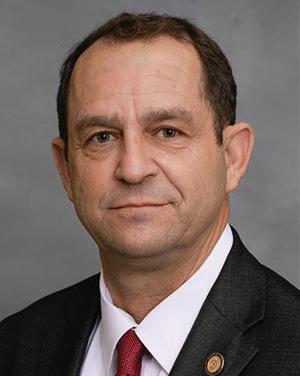



2. Sen. Jim Perry, R-Lenoir, will become co-chair of the Finance Committee, replacing Sen. Warren Daniel, R-Burke, who’s moving over to co-chair the Judiciary Committee. Daniel will also serve as a vice chair for Senate Rules Chairman Bill Rabon.

3. Sen. Kevin Corbin, R-Macon and one of the earliest GOP backers of Medicaid expansion, will replace Perry as a cochair of the Health Care Committee.
4. Sen. Amy Galey, R-Alamance, will replace Sen. Deanna Ballard as a co-chair of the Education/ Higher Education Committee.
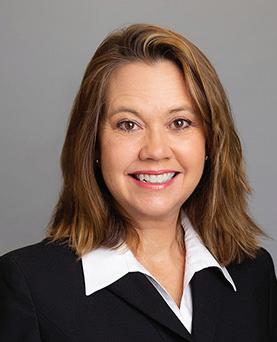
5. Sen. Michael Lazzara, R-Onslow, will replace Sen. Danny Britt as one of the co-chairs of the Transportation Committee.

23 FEBRUARY 2023
AETNA EDGES BLUE CROSS FOR KEY STATE CONTRACT
By Colin Campbell
The State Health Plan’s decision to cut ties with Blue Cross Blue Shield a er more than 40 years promises to shake up the health care landscape in North Carolina.
e Health Plan’s governing board has awarded a three-year contract to Aetna starting in 2025. at means 740,000 teachers, state employees, retirees and their dependents will have a new insurance provider, and Durham-based Blue Cross will lose a chunk of business, potentially leading to layo s.

State Treasurer Dale Folwell said that the new contract “focuses on transparency and lower costs, with the potential administrative cost savings over the course of the contract equaling $140 million.”
Details on exactly how Aetna’s bid compared to Blue Cross and a third bidder, UnitedHealth, weren’t available as of press time because public records haven’t been released. Both Blue Cross and UnitedHealth have led formal appeals contesting the decision, and it’s possible the matter could result in lawsuits. Aetna is owned by Woonsocket, Rhode Island-based CVS Health.

For months before the move, sta and board members voiced concerns about the service they were getting from Blue Cross. One board member even suggested ring the company.
State Health Plan executive director Dee Jones mentioned that comment when she announced at June’s board meeting that the

plan would open bidding on the contract, with plans to award a new contract in December.
Blue Cross is in the rst year of a three-year contract, and the Health Plan has the option to renew it for an additional two years without opening up to other bidders. So the decision to take bids in 2022 appeared to re ect dissatisfaction.
e complaints involve Blue Cross’ turbulent transition to a so ware system called Facets.
Jones gave the Health Plan board a laundry list of problems with the new system at its March meeting. Some claims and vendors weren’t being paid on time. A major physicians’ practice was inexplicably dropped from the plan’s provider directory. State employees had trouble logging into their accounts to view plan information and ID cards.
e switch to Aetna comes at a period of transition for the Health Plan’s leadership too: Jones le her job on Dec. 16, two days a er the contract was awarded. She started a new position with the IT rm CGI starting in January, according to her LinkedIn page.
Sam Watts, the longtime legislative liaison for the treasurer’s o ce, is doing double duty now as interim executive director for the Health Plan while keeping his legislative responsibilities and will review the appeals. ■
24 BUSINESS NORTH CAROLINA NC TREND ››› Statewide
Aetna’s headquarters in Hartford, Connecticut
CHARLOTTE
CHARLOTTE
Wells Fargo plans to focus its large home mortgage business on existing bank and wealth management customers and minority customers, pulling back from lending to a broader swath of Americans. The bank cited a collapse in the lending market as interest rates soared and reduced profitability.
The N.C. Utilities Commission sided with the village government in its bid to regulate the community’s parking and barge operations. The commission ruled both the barge and parking operations were integral to ferry operations as an ancillary service. Both services are operating as “de facto monopolies,” the commission ruled, with no viable alternatives.
EAST
CASTLE HAYNE
FORT BRAGG
Silicon Valley Bank, based in Santa Clara, Calif., received a building permit for a $7 million renovation at The Line, a 16-story tower that opened last May in the city’s South End. SVB Securities, the bank’s investment banking division, moved into the building, and the bank will be opening additional space there.

The city council’s transportation committee voted unanimously to support a proposal that would rebuild the city’s main bus station underground. City staff recommended placing the station underground instead of on a second or third floor as part of the new transportation center building.
Transit in this rural, but growing part of New Hanover County may benefit from more than $10 million in grant money from the federal government. The area is one of 11 North Carolina communities selected to participate in Mobility for Everyone, Everywhere in N.C., an N.C. Department of Transportation program.
FAYETTEVILLE
An economic development leader in Cumberland County says Amazon still plans to open its 1.3 million-square-foot fulfillment facility here. The warehouse, which was supposed to open in either late January or early February 2023, is expected to bring 500 full-time jobs to the city.
The city council approved contributing $2.5 million in American Rescue Plan funds to match a state grant that expired at the end of December. The community equity venture fund is designed to help minority businesses overcome hurdles with traditional lending models by providing noninterest-bearing capital.
In the 2023 defense budget, the Army base will receive more than $84.5 million for construction projects including a new gun range, Special Forces buildings and a child care center. U.S. Rep. Richard Hudson, whose district includes Fort Bragg, said he worked to secure provisions in the budget.
TYRRELL COUNTY


North Carolina will receive $110 million in federal funds to replace an aging bridge on U.S. 64 that helps link eastern North Carolina to the Outer Banks. The new two-lane, fixed-span bridge would cross the Alligator River between Tyrrell and Dare counties and would replace the Lindsay B. Warren bridge.
WILMINGTON
After a settlement brought her previous civil rights lawsuit to a close two years ago, former UNC Wilmington diversity admissions director LaTasha Jones’ accusations against the university have been rejected by a judge. In federal court, Judge Richard E. Meyers II granted UNCW’s request for dismissal on Dec. 19, almost a year after Jones filed her second lawsuit.

25 FEBRUARY 2023
BALD HEAD ISLAND
PHOTO COURTESY OF THE LINE,
TRIAD
BURLINGTON
Health care industry veteran Thomas Pike, who previously led Quintiles (now Iqvia) in Durham, has been named president and CEO of Labcorp’s drug and clinical development business. He will report to Labcorp CEO Adam Schechter until the spin-off is completed.H PO
HIGH POINT
WINSTON-SALEM
Winston-Salem State University Chancellor Elwood Robinson, 67, plans to retire on June 30. Robinson, who became the 13th chancellor in the school’s history when he took over in January 2015, will retire after 39 years in higher education. Provost Anthony Graham will serve as interim chancellor.
TRIANGLE
DURHAM
MONCURE
Lumos, a fiber optic internet provider formerly known as NorthState, is making a $100 million investment in South Carolina to expand its network footprint. Lumos is targeting the Columbia area for nearly 1,200 miles of fiber as the company’s first investment in the Palmetto State.


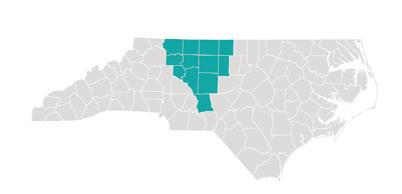
WINSTON-SALEM
A property developer is in a stalemate with the city’s historic preservation department stemming from signs placed on the former Twin City Motor Company Building, a local historic landmark. Mayfair Street Partners, which owns the building, says the signs were already installed when they bought it.
Durham Technical Community College will use a $6 million donation from Novo Nordisk to help pay for a new life-sciences training center at the college’s main campus. In a $112 million bond referendum approved for the college, about $35.2 million was carved out to construct the training center, which is expected to open in 2026.

A nonprofit is fighting plans for Vietnamese automaker VinFast’s factory in Chatham County because of potential harm to waterways. VinFast and the N.C. Department of Transportation are trying to get federal approval for construction that would impact nearby waterways. The 284-page permit application is under review by the U.S. Army Corps of Engineers.

MORRISVILLE
There are signs of construction at the proposed future site of an Apple campus in Wake County that could house more than 3,000 workers. Public records obtained by WRAL News indicate that work is under way to prepare the 281-acre site. A number of permits and documents have been filed with Wake County.
RALEIGH
Plantd, Inc., which aims to deliver carbon-negative materials for new home construction, has raised a combination of equity and debt including shares of convertible preferred stock, according to a filing. Thirty-one investors participated in the funding round, with the company raising a total of $13.6 million.
North Carolina set annual records for the number of jobs pledged in economicdevelopment projects as well as the value of those capital investment commitments. It is the second consecutive year the state has set a new record. There are 28,690 planned new jobs connected to 182 business recruitment, expansion or rural development projects, representing a combined $19.3 billion of capital investment.
26 BUSINESS NORTH CAROLINA NC TREND ››› PHOTOS COURTESY OF PLANTD AND WINSTON-SALEM STATE UNIVERSITY
Statewide
North Carolina was awarded the 2029 World University Games by the International University Sports Federation. The group’s executive committee voted for North Carolina, marking just the second time the Olympic-style summer games competition for student-athletes will be held in the U.S.

Public relations firm French/West/Vaughan acquired The Millerschin Group, one of Detroit’s leading transportation-focused marketing companies. Terms weren’t disclosed. It’s the latest expansion by CEO Rick French, who has built the Southeast’s biggest PR firm with more than 130 staffers since its formation in 1997.
Eric John Bergevin, 53, CEO of both Integrated Financial Holdings, based here, and its banking subsidiary West Town Bank & Trust, died in a plane crash in southeast Virginia. Christian Rask Fauchald, 54, also died in the incident, police said
Raleigh-Durham International Airport wants to more than triple the size of its largest surface parking lot, adding about 8,700 spaces. Airport officials have launched a study of the project’s potential impact on the environment. The number of passengers at RDU grew 56% in the past decade.
First Bancorp completed its $181.1 million stock purchase of Greenville, S.C.-based GrandSouth Bancorp, more than doubling its branch presence in the Palmetto State. Adding $1.3 billion in assets and eight branches, First Bancorp expands its superregional status to about $12 billion in total assets and 118 branches.
WEST
ASHEVILLE
The city’s water resources director said that he was responsible for making the call to cut the southern portion of the city off from water as a result of damage from freezing temperatures. The December 26 decision was an attempt to prevent a boil water advisory from being issued citywide, he said.
CANTON
For more than a year, residents here have complained about a gritty white dust from the Evergreen Packaging paper mill clinging to their cars and driveways. Evergreen received an $8,045 penalty and four dust-related notices of violation from the N.C. Department of Environmental Quality in 2021-22, but it hasn’t been able to fix the problem.
MURPHY
Cherokee County formally declined a $50 million state grant that was awarded to build a unified high school serving the entire county. Although the county can apply for new grant funding next year, commissioners and school board members have been unable to come to an agreement on an alternate plan for school construction.



27 FEBRUARY 2023
SOUTHERN PINES
PHOTO COURTESY OF THE PILOT.
FULL STEAM AHEAD
In early January, Business North Carolina publisher Ben Kinney invited six business, academic and political leaders to Campbell University’s downtown Raleigh campus to discuss their outlooks for 2023. While a recession is looming, North Carolina is better positioned than most states to weather a downturn, panelists agreed.






SPONSORED SECTION 28 BUSINESS NORTH CAROLINA ROUND TABLE ECONOMIC
FORECAST
Photography by Bryan Regan
Anthony Copeland senior economic development & corporate strategist, Brooks Pierce
Adam Currie chief banking officer, First Bank
Chuck Mattina senior vice president insights and analytics, Sales Factory
Lundy-Fetterman
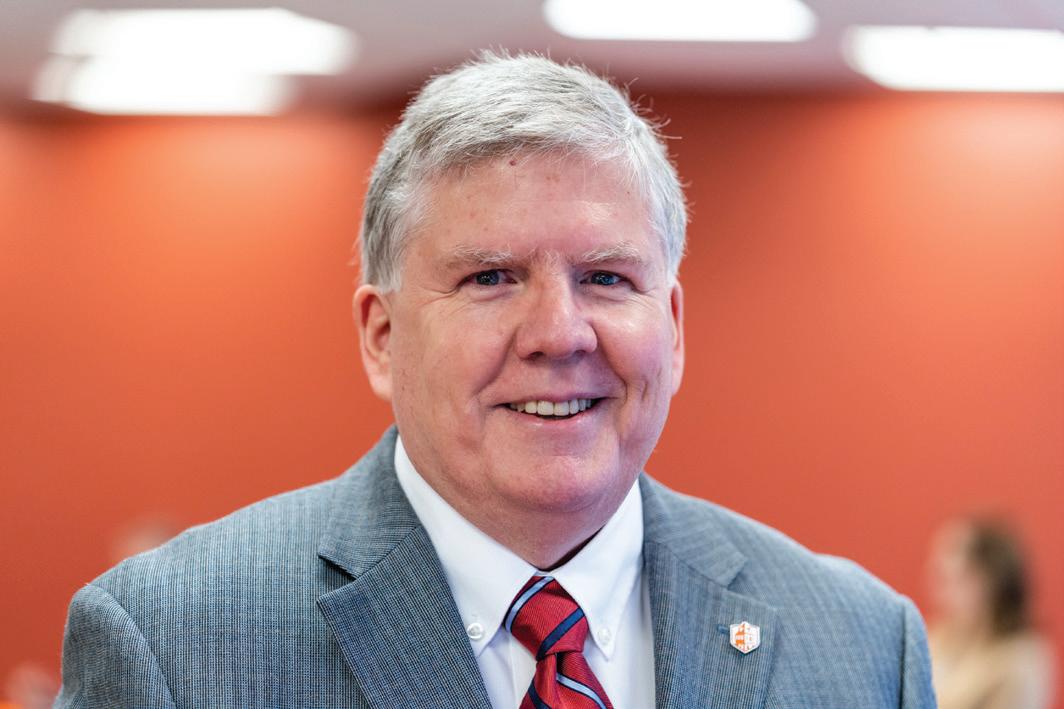

geopolitical issues that may instantaneously change things.
WHAT IS THE ECONOMY LOOKING LIKE IN 2023? IS THERE A RECESSION AHEAD?


STECKBECK: We’re actually looking at much better prospects (since late 2022) although I still think pretty certainly we’ll be in a recession sometime this year. In November, inflation was hitting over 9%. The most recent number was 7.1%. That’s a big drop. We are seeing the supply chains coming back to normal with a strong dollar because of the Fed’s rate increases have reduced export demand, which is helping to alleviate inflation.

It’s a unique time. We’re seeing recession indicators, but strong employment numbers. Well, we now have to worry about some
The unemployment rate, which was nationally 3.5%, is now 3.7%. It is 3.9% in North Carolina. When the unemployment rate increases by half a percentage point over its average for the year, — which again is about 3.5% — that tends to be an indicator of a recession.
Whenever the Fed has had to reduce inflation by raising interest rates, that has always been followed by a recession, for the past 50 years. And so we really are looking sometime this year, we will be facing a recession. The question is will it be a hard or soft landing? We could look at maybe a 1% reduction in GDP lasting probably anywhere from three to six months If we have a soft landing. If it’s a little harder, we’re probably looking at unemployment of 6%, maybe 7%, which would be pretty high. We’d look at a 2% decrease in GDP and something that might last a year or even more. I think the possibility of that happening has lessened. I think
we economists are more in line with looking at the softer landing. In North Carolina, we are in a unique situation. We have a lot of growth happening with the ninth-fastest growing population. We were just nominated No. 1 for economic development in the United States (There are) 100,000 jobs and $110 billion in business investments happening here. We’re seeing tourism picking up. Manufacturing has had a drop, but it’s picked up again.
SAINE: We’ve got some new faces at the legislative building, where we’re just one short of a supermajority in the House of Representatives. We’ve been close over the last several years, but have worked on bipartisan legislation and bills and budgets over the last years. We’ve finally found a way to work on budgets with the Cooper administration. We’re working with Governor Cooper on his priorities as well.
We’ve been very wise in how we’ve invested in our state When you look

29 FEBRUARY2023
Jason Saine State representative, North Carolina General Assembly
School of Business at Campbell University, NC Rural Center, Brooks Pierce, First Bank and PBMares sponsored the discussion. It was moderated by Ben Kinney, publisher of Business North Carolina. It was edited for brevity and clarity.
Dr. Mark Steckbeck associate professor of economics. Lundy-Fetterman School of Business, Campbell University
Patrick Woodie president and CEO, NC Rural Center
at the good news that we have, I do believe (a recession) will probably be much softer and a lot easier for us in our state than what I’ve seen in other states.

The pandemic showed where our weaknesses were. A lot of our rural communities don’t have high speed Internet. But we’re getting there and we want to make sure that we stay on track. It’s good to see that inflation is coming down because we’ve got a lot of building that’s going on. We’ve put together a capital expenditure fund over the last several legislative sessions and we keep reinvesting back in the state. We’re investing in our university system and our community
colleges and our workforce. We know that having that workforce and developing that workforce is crucial. So those are big priorities that happen at the legislative building.
Whether or not we expand Medicaid, I won’t make any predictions there. I think it’s at a better place than it was last session. We’ll have hot topics like sports betting and medical marijuana that will always surface to the top.
We’ve got tax reform that’s already baked into the budget that we just passed last year, that’s lowering rates for individuals and corporations. I think from a leadership perspective and from
talking to my friends on the other side of the aisle, people are ready to get to work.
CURRIE: I’ve always predicted a tough year ahead (in past round tables) and I might finally be right and predict the same thing again. Just like my colleagues up here, I believe there will probably be a recession in 2023. Bankers always worry about these things. If you think about 1% shrinking of GDP, that’s okay. You know, most companies and most individuals can absorb that. And that’s not to say that there won’t be some pain, but if you think about the last two recessions that we’ve been through at the start of COVID, with
SPONSORED SECTION 30 BUSINESS NORTH CAROLINA ROUND TABLE ECONOMIC FORECAST
unemployment being suddenly 15% or 17% and overnight losing 30% of GDP, I don’t foresee that happening again in 2023.
And then if you look back to 2008, which was the greatest financial crisis since the Great Depression and kind of a once-in-a-century type of event, I don’t see that happening either. So when we talk about a recession or economic softness, soft landing, hard landing, all of the buzzwords that you hear thrown around, what is reality? We probably will have a slower year this year than we’ve had in the past. Things probably need to slow down a little bit. I think obviously prices and inflation need to slow. I
think employment needs to slow a little bit.
I’m sure there are other business leaders in this room that are having trouble hiring great people and attracting great people. I think this year is going to provide a little bit of balancing. There will be some tough times ahead. But as a country and more as a state, we’re probably better positioned to absorb them than we have been in the past. I don’t think there’s a place in the country where you’d rather be as both someone in business and just to live your life.

I’m looking at statewide data and national data and I also look at
our company. Some of the things that I look for are our credit card balances increasing, our home equity line balances increasing and our checking account balances decreasing. Across two states and 300,000 customers we’re not seeing these things yet.
We’re seeing credit card balances go up slightly. We’re seeing home equity loan balances going up slightly, but checking account balances are staying pretty steady amongst businesses and individuals. So we’ll continue to monitor those things.
COPELAND: North Carolina set a record for jobs and capital
31 FEBRUARY 2023
investment in the history of the state. Even with the Fed continuing to use the blunt stick of raising interest rates, I think North Carolina will weather this and get through it. We have too many fundamental things in place. Number one is we have a tax structure, thanks to the legislature, that gives an authorizing environment for all of us, but individuals and companies to prosper and grow. If you look at every major project that’s come in the state since 2017, it has either been led or actively run by the General Assembly. They have passed new incentive measures. They have actually appropriated cash for infrastructure. And I don’t see that stopping. It has put us on a new level of economic development that we weren’t on before. We’re one of the only states in the country that has 700,000 people enrolled at any given day in private and public universities and community colleges. There’s a pipeline for employees.
We grew a million people during the last 10 years. We’ve doubled our population size since 1968. We’ve gone from 5 million to 10 million people, and we’re continuing to do that. What hasn’t come back is labor. I agree it’s not because people won’t come back to work. At this point. I think most of that (stimulus) money is finished sloshing around in the economy. I think a lot of people probably retired and didn’t come back.
WOODIE: Well, I guess I would begin by saying I’m a 30-year plus year rural economic developer, so I’m an eternal optimist. You have to be if you’re if you’re going to
be in this career. And I really am optimistic. At the Rural Center, as we look at the demographics, it is incredible to me how much the state has changed over the years. The rural center is 37 years old. If you go back to the day we opened our doors in 1987, almost 60% of the population of the state were rural citizens. Today, we’re at about 30% to 34% of the population. For the first time in the state’s history, we’re equally divided between rural, urban and suburban citizens.
One thing that stands out to me is there’s more variation among those 3.6 million rural North Carolinians that live in 78 rural counties in North Carolina than there is among the 16 suburban counties and the six urban counties. How well you’re doing, how you may feel about the economy does have a lot to do with the geography of this state and where you’re standing within that geography at a given point in time. And there clearly are places that are struggling that have bigger challenges than other places.
One of the common perceptions is that everybody’s leaving rural North Carolina. It’s actually not true. There are 51 counties in this state that between 2010 and 2020 lost population. But in 30 of those counties that lost population, that is really minor. We’ll see what the future holds for the next few years. But it’s not really cause for alarm.
I do think we need to be prepared. And the state certainly recognizes this. I am amazed if you told me the investments we would have been making in rural broadband and infrastructure or in workforce
development. Representative Saine, I remember talking to you and fighting for a state based rural broadband grants program and asking for $10 million a year.
Over the next five years, we’re going to have $3 billion from a combination of federal and state sources that are aimed toward addressing this issue of getting rural broadband infrastructure to every home and every business in every place, all across this state.
We just can’t lose sight of the fact that there are some places that clearly have been left behind, arguably since the turn of the century. You can really see how that plays out in the numbers. So we have to pay attention to those places and care about those places. But I think a lot of the fundamentals are sound. I hear optimism from even those more isolated rural parts of the state, from the leadership that is there. It’s an enthusiasm that I haven’t quite felt in a while.
MATTINA: I’ll talk a little bit about where we see the consumer going in 2023 as consumer spending makes up 70% of the U.S. economy. We may have 3.7% unemployment, but consumers are hearing about 153,000 tech jobs that have recently been lost in companies, including Cisco, which has a presence here. This morning, you saw Salesforce announcing 10% cuts in 2023. Vimeo is going to reduce their workforce by 11%. Goldman Sachs is going to cut employment by 8%. More job cuts are coming. So consumers are not hearing a lot of great things right now in terms of the job market.
SPONSORED SECTION 32 BUSINESS NORTH CAROLINA ROUND TABLE ECONOMIC FORECAST

Holiday debt was 24% higher this year than last year. The other thing we think about was that prior to the pandemic in 2019, the personal savings rate was 8.8%. It was down to 2.4% in November.
We have what we call the French toast index. French toast involves bread, milk and eggs. Those are the staples on the grocery list. In November, you were paying 33% more for bread, milk and eggs than you were in January 2022. If you’re the person doing the weekly grocery shopping, you think everything else in the grocery store is costing you 33% more also.
Perception is reality to the consumer. So that’s a real challenge. And if I’m spending 33% more to make French toast, well, that’s 33% less that someone can spend on our client’s products like home improvement products and everything else. So there is an issue there.
This all factors into consumer confidence. The University of Michigan consumer sentiment score hit the lowest level ever in June
2020, at 50. It’s come back up to 59, but that’s lower than the 71 it was last December and the 81 from December 2020. So that’s a challenge. We sure are seeing confidence at its low point for that index.

We created an index that measures confidence in the U.S. economy right now, expectations of your household income this year versus last year, and the likelihood that you will delay purchases based on uncertainty. The year started about 27%, which means about a quarter of the population felt this anxiety. It crept up to about 34% at the end of the year.
So we’ve gone from a quarter to about a third saying that there is anxiety out there. The more anxious consumers are, the less willing they will be to spend and take on more debt. We did see spikes that went above 40% when gas went over $5 a gallon and mortgages went over 7% for the very first time. But from everything that we’re seeing, we don’t necessarily see consumer confidence taking a turn any time
soon. I’m not smart enough to say we’re going to be in a recession or not a recession. What we can say is we don’t see consumers necessarily opening their wallets more, at least in the first half of the year. They’re probably at that point right now where they’re just waiting for the next shoe to drop. This will determine where consumer confidence goes in the second half of 2023.
WHAT ARE SOME OPPORTUNITIES FOR THE STATE MOVING FORWARD?
WOODIE: I’d like to bring up how we are learning to live with COVID. I don’t know if there is a post-COVID era in which we learn to live with it and things return to normal. Thank God we’re not doing this discussion on Zoom. We’re actually here in person with each other. Everybody on the planet is rethinking the circumstances under which they want to live their lives. And part of that involves thinking about workplace flexibility that is probably with us to stay, to some extent. There may be some
SPONSORED SECTION 34 BUSINESS NORTH CAROLINA ROUND TABLE ECONOMIC FORECAST
tightening of that as time goes on. I think we’re going to have more flexible work days for workers, and it’s going to allow them to think about where they live and how they live.
There may be some investment in some of our smaller towns as people make lifestyle decisions about where they want to live their life and under what circumstances.
I’ve talked to several rural school superintendents who see enrollment expanding. Some families whose primary residence has been in the Triangle or Charlotte are making a lifestyle decision for their second home to be a permanent residence

in a rural community. Does that constitute a trend? I hope so. This is an opportunity for every small town in this state.
MATTINA: I think that the affordability of housing has to be addressed, because I think that’s a huge issue. You know, we talk a lot about the growth, and I’ve only been in Raleigh for one year. I’m out in the Apex area and I just see the boom that’s happening. I also talk to a lot of the Gen Zs at the company I work with and I’m floored by the price of rents that they pay. Fifty-two percent of millennials do not own a home right now. And I think I’ve heard recently that 22% of millennials think they’ll
never own a home because of the affordability out there. So I think It’s crucial to address the affordability issues for the millennials to get more of them to become homeowners.
CURRIE: I’ve read something recently about the growth in the urban areas and rural areas as well. Charlotte’s population grew by about 74,000 people last year. I started to think about that and what that meant. And if you think about the thriving market of Wilmington, which has been cited as one of the fastest growing or in-migration cities in the country. The whole area around Wilmington is a big, thriving place. The Wilmington MSA has about
35 FEBRUARY 2023
280,000 people. Think about the growth in Charlotte and the growth in Raleigh and supporting that growth. Think about all those houses and all those shopping centers and all those office buildings and all those restaurants and all that infrastructure, all those roads… You have to build a city the size of Wilmington every four years or so in Charlotte and in Raleigh to keep up with the growth. And it’s not just those two markets that are growing, you have Asheville, Greensboro, the Carolina Core growing. I just think we’re really well positioned and we’re going to continue to grow for the next decade or more.
SAINE: I agree with that. You know, capital investment is going to matter. We’ve done that over the last decade and it will continue. I have a friend who was a legislator in Texas and he’s one of those involuntary retirees in politics. But he has a financial advising business. When he first got to Cashiers, he didn’t have the

broadband connection he needed. But as broadband came online there, people would come visit and fall in love with Cashiers. The firm has now moved there and does most of their business in North Carolina. It’s not a company that we had to go out and incentivize to come to North Carolina.
There’s even more wealth coming into the state. One that’s important to remember is that as we grow from a rural perspective and open up those markets to businesses just like that, it’s not always 500 jobs or a thousand jobs. It’s those smaller firms, too, that contribute. So that’s very important to think about.
STECKBECK: I think the prices of rents are already going down and we’ll continue to see that happening. One of the things that has happened, millennials are more likely to live alone as opposed to when I was 20. But we do need to keep building with the growth rate of this population. There are a lot of

obstacles for developers to get stuff built. It adds about 25% to the price of a home. So I hope the legislature will start looking at that. I think the growth in the population is really going to be a big factor that does help us. It will continue providing the labor force that’s needed.
COPELAND: Probably nobody’s expecting this, but one of the things that goes in all of these projects I’ve been involved in since 2017 is energy, both its cost and its predictability. In North Carolina, the integrity of our energy network is really second to none. We have to maintain the integrity of that and continue to keep building those sources if we’re going to grow. I mean, a semiconductor plant can use almost the whole capacity of a nuclear power plant. ■
SPONSORED SECTION 36 BUSINESS NORTH CAROLINA ROUND TABLE ECONOMIC FORECAST

Shell shock




North Carolina oyster farmers face pushback from the beach crowd.
By Emory Rakestraw
Looking out onto Bogue Sound, one might envision a permanent vacation, the expanse of water and marsh beckoning visitors to sit back, relax and soak in the uninterrupted views. Others see possibilities, namely an opportunity to jump into North Carolina’s $30 million oyster industry, one that’s expected to hit $100 million by 2030.
ese two outlooks are creating a clash in coastal North Carolina. Potential oyster farmers are hoping to land water leases and set up small farms, while homeowners and local lawmakers are ghting back with moratoriums. Current discourse threatens to halt a burgeoning industry ush with environmental bene ts.
In Onslow County, the estuarine waters of Stump Sound envelop Permuda Island, approximately 1.5 miles long, with archaeological evidence dating the earliest occupation to

300 B.C. Native Americans would scour the island for oysters, clams, scallops and crabs. Centuries later, when Europeans made landfall on the North Carolina coast, towering oyster reefs beckoned a new economy as bushels were traded for supplies.
By the 1800s, North Carolinians would o en tong oysters from the shallow-water mud, and as reefs and beds became depleted in Maryland and Virginia, “oyster pirates” armed with Winchester ri es traveled south. Using dredges that gathered both seed and mature oysters, they pillaged the waters of Hyde, Dare and Carteret counties until 1891, ceasing only when the National Guard interfered. By 1902 oyster harvesting reached its peak, with 5.6 million pounds of oyster meat harvested that year. ere was essentially no regulation at the time, says Erin Fleckenstein, a scientist with the nonpro t N.C. Coastal Federation.

38 BUSINESS NORTH CAROLINA
“ e thing with oysters is that you’re not only harvesting the product, but you’re also harvesting the habitat,” she notes. “Centuries of harvest, disease, storms and water quality impacts from land development have decimated our wild population. It’s an uphill battle.”
e oyster is a simple creature, living life in one spot despite what Mother Nature or man might conjure. Oyster reefs modify and create habitats for other aquatic life, accumulate marine biotoxins, and help prevent algal blooms. e average adult oyster also lters up to 50 gallons of water per day.
Yet wild oyster populations have continued to struggle. Harvesting and disease decimated an estimated 95% of the natural oyster population over the past two centuries. Conservation e orts in recent years have helped raise the population to about 15% of its historic total, researchers say.
Oyster farming has stepped in to bridge the gap, providing the same environmental bene ts and briny bivalves. Placed in their natural growing environment of sounds, marshes and intertidal waters, seed oysters (also called spats) reach harvest in racks, bags or cages. e spats are le in the water for about 18 months, tumbled by the tide, sorted for size, and o en harvested at 2 or
ese “manicured” oysters are shaped through the process of transferring and spacing, resulting in deep cups, hearty meat, and an aesthetic deserving of half-shell status. e majority are sold year-round, both locally and nationally, to restaurants, distributors or grocery stores. With nearly 2.1 million acres of estuarine waters in North Carolina, Fleckenstein notes the number of acres needed to have a sustainable aquaculture industry is only a drop in the bucket.
Farming oysters
In 2013, Chris Matteo shi ed careers from nance and investment management to oyster farming, opening Chadwick Creek Oysters and Seed Nursery in Bayboro. At the time, Matteo was one of the few growers in the state, and Chadwick Creek’s nursery helped foster budding aquaculture businesses with Matteo advising hopeful farmers. In 2018, he became president of the North Carolina Shell sh Growers Association, which now has about 40 members.
Matteo compares the lure of oyster farming to that of purchasing a well-established vineyard. He says North Carolina has been called the Napa Valley of oysters because much like grapes, oysters take on the avor of the environment they’re grown in. It’s called “merroir.”
Other farmers just enjoy living on the coast, participating in a labor of love. By 2019, interest in oyster farming gained prevalence in North Carolina, with 106 applications for leases.
“Obviously there are upfront costs, but once you have a barge or docking, the average oyster farmer is going to spend $25,000 to $50,000 per acre to set up, and these costs go down when you scale up,” says Matteo. Smaller farms generate pro t margins of 40% to 50%, while larger ones can earn as much as 80%, he says. “For some people, the interest is in the money. For others, it’s aquaculture or conservation.”

A er North Carolina’s shell sh aquaculture bill passed the legislature unanimously in 2019, Matteo expected oyster farming to continue gaining popularity. e bill established three 50-acre shell sh leases in Pamlico Sound and facilitated enterprise areas, or ideal locations, for small oyster farms.



















Bogue Sound was poised to be the site of initial farms, but it quickly became a battleground a er a shell sh grower received a lease approved by the state Division of Marine Fisheries. “Nearby homeowners in a condominium development did not like the idea of a shell sh farm within 1,200 feet of their property, mainly for view-shed reasons,” Matteo says. “ at was the beginning of a coordinated e ort to shut down all of Bogue Sound shell sh farming using a moratorium.”

39 FEBRUARY 2023
Bayboro's Chris Matteo is a shellfish industry leader.
Not in my backyard
With a maximum lease of 10 acres, one oating cage can t as many as 150 oysters and spans from a single to six-bag system. Within 4 acres alone, more than 4 million oysters can be harvested. Buoyed by twin oats, cages are attached by lateral lines to a main line and come out tted with removable caps that allow a farmer to ll the oats and sink the cage.
ere’s nothing blocking water views beyond the farm. But Matteo cites a not-in-my-background, or NIMBY, mindset as the basis for North Carolina’s modern-day oyster war. Homeowners fear that their view might one day be compromised.
at opposition sparked a coordinated e ort against shell sh farms that led to a moratorium in the same bill passed by lawmkers in 2019. “Now, no new leases for oyster farming can be permitted in Bogue Sound until the moratorium is li ed and any new growers cannot apply for a granted lease,” Matteo says. “At the time, there were only 16 acres in commercial production that triggered a shutdown of a 65-acre water body.”


In addition to opposition from beach property owners, adherence to the state’s Coastal Area Management Act is also challenging for the oyster industry. Prospective shell sh farmers must go through a complicated process to secure a permit approved by the N.C. Coastal Resources Commission. Matteo recalls a shell sh farmer giving up a er waiting during a four-year, back-and-forth approval process.
“Although we are farmers, the Division of Coastal Management does not want to recognize shell sh farmers as such,” he says. “ ey do not want to say one way or another if
we’re actually agriculture,” though industry o cials consider it to be part of North Carolina’s $93 billion ag sector. He is working to gain support for the industry along with the N.C. Farm Bureau and other groups to prevent yearslong waits for applications and to block future moratoriums.
“Farm Bureau represents the farming community in this state, and we’re considered farmers. ey’re very interested in things that a ect shell sh growers and have been involved for many years,” he says. “For 2030, the estimate we’re hoping to achieve is a $100 million impact” when factoring the impact of shell sh dealers and restaurants.
Floating junkyards?
Since 2003, the North Carolina Coastal Federation’s Oyster Blueprint has served as a protection and action plan for oysters. It has restored nearly 450 acres of habitat, grown the shell sh aquaculture industry from $250,000 to $5 million, and built a coalition of nearly 25 partners. Alongside it is the Oyster Trail, a tourism marketing e ort highlighting oyster farms, restaurants and conservation programs.
Still, the positive PR and water ltration bene ts haven't impressed some coastal politicians. Randall Bentley, a retired District Court judge and town commissioner in Indian Beach in Carteret County, called the farms “a oating







40 BUSINESS NORTH CAROLINA
This map shows a shellfish lease location on Money Island Bay in Carteret County.
PHOTOS COURTESY OF BO ALLEN.
junkyard” at a meeting last year. e few jobs created for oyster harvesting risks major job losses in the region’s tourism industry, he wrote in a letter to a local newspaper last year.
Oyster farming “could ruin permanently those sunset views on all the sounds of North Carolina,” Bentley wrote. “ en, we could try to ignore the loss of property tax dollars as people leave the sound waterways — resulting in falling real estate values for those hundreds of millions of dollars in residential homes and condominiums — on all the sounds of North Carolina.”
Atlantic Beach Mayor Trace Cooper has also criticized oating structures, calling them “industrial houseboats.” He’s a former member of the Coastal Resources Commission and a real estate developer. Other mayors, such as Sharon Harker of Beaufort and John Brodman of Pine Knoll Shores, have o ered support for aquaculture. Meanwhile, development largely hinges on lease permits approved by local governments.
As of 2022, there were nearly 450 leases approved in North Carolina, totaling 2,221 acres. Research by UNC Wilmington and other institutions suggests that oyster farms lead to a higher density of adjacent wild oysters and aquatic animals, while reducing the cost of treating nitrogen for local communities by as much as $7,300 per leased acre annually.

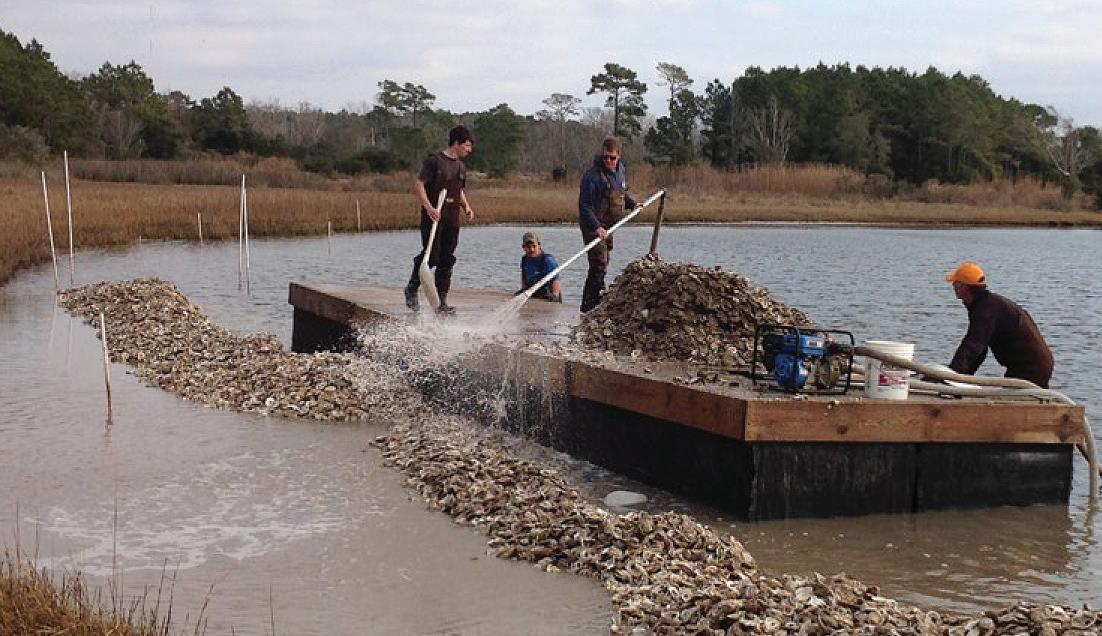

“Wild oyster populations are severely depleted, and water quality is highly dependent on the oyster population,” Matteo says. “We’re providing ecosystem services for free that otherwise wouldn’t be occurring. Lastly, oysters are some of the most
nutrient-dense forms of protein on the planet, and oyster farming is one of the greenest forms of protein production.”

Debates over new regulations and localities’ right to enforce leases are widely viewed as a hotter topic than in 2019. e Coastal Resources Commission recently asked N.C. Attorney General Josh Stein to consider issues involving the CAMA law. Fleckenstein says it’s about achieving the right balance.
“We recognize waters are a public trust resource and there needs to be balanced use of them,” she says. “It’s a big balancing act. Environmental and economic bene ts speak volumes and help create a good framework and case for the expansion of oyster farms in the state.” ■
Carteret Community College offers classes in oyster farming.
41 FEBRUARY 2023
Oyster farming sparks economic and environmental benefits, boosters say. But some beach dwellers say it's too ugly.
PHOTOS COURTESY OF NORTH CAROLINA COASTAL FEDERATION (2021).
Shifting strategy at N.C. State Employees’ Credit Union raises debate over balancing members’ needs. Whose interests deserve priority?
 By David Mildenberg
By David Mildenberg
hris Ayer joined the North Carolina State Employees’ Credit Union in Raleigh as a software coder in 1988 after working for a Roanoke, Virginia, bank. His initial salary was about the same as his wife’s paycheck as a Wake County school teacher.
Ayer eventually became the credit union’s chief technology officer. But he says he didn’t realize why his job really mattered until receiving a call in 1999 from a member who wanted to know his account balance.
Credit union policy blocked IT staffers from sharing customer information, so Ayer mentioned other options. The guy wasn’t impressed, so Ayer urged him to walk into a local branch and talk with a teller.
I’m a quadriplegic, so that’s not an option, the member responded.
That’s when SECU’s culture of putting members first really hit him, Ayer recalls. If that meant driving to the member’s home and delivering the information personally, that’s what you did.
Seventeen people started SECU with $437 in 1937, when the U.S. was mired in depression. Today, it has $54 billion in assets and is the second-largest U.S. credit union. It has nearly 8,000 employees in 100 counties and 2.7 million members, or more than one in five North Carolinians.
No one disputes the credit union’s remarkable achievements. Now, though, how it operates is being challenged by insiders who say some of its distinctive policies need updating in a fastchanging sector. Like most change, it’s causing sparks, in this case from critics who say SECU is straying from its core mission.
SECU has never lost money in 85 years, booking a net gain of more than $1 billion over the last two fiscal years. It holds much more capital than required. Credit unions don't have shareholders and are considered not-for-profit.
Three North Carolina megabanks — Bank of America, BB&T (now Truist), and First Union (renamed Wachovia, then Wells Fargo) — grew through hundreds of acquisitions, mostly out of state, engineered by aggressive CEOs. The dealmaking worked great, until it didn’t: Wachovia, BofA and BB&T received government bailouts after the late-2000s housing depression. Each bank repaid the money.
SECU stuck to internal growth, a unique consumer lending strategy and a culture that motivated good customer service.
The credit union’s inflection point is sparked by its unpaid, volunteer board of veteran state government leaders and Chief Executive Officer Jim Hayes, a veteran industry regulator hired in 2021. During his 18 months on the job, Hayes has reorganized SECU’s senior leadership and is directing some fundamental changes rejected for decades by his predecessors.
A key thrust: The credit union should grow by lowering rates on loans to members with strong credit ratings, while also remaining highly focused on those with modest incomes. Four of five SECU members are not state employees, but rather family members or in private-sector jobs. About 16% of members' total debt is with SECU, down from 26% five years ago.
Another new plan: SECU wants to make business loans to members with needs such as expanding their office space. While many N.C. peers issue such loans, SECU has not.
Hayes notes that he regularly hears from advisory board members and branch workers about customer demand for small business credit. It’s particularly critical in rural areas that have been increasingly abandoned by N.C. banks, he says. SECU, with 273 offices in 100 counties, is the sole financial center in several N.C. small towns.
The shift has received limited notice because it’s occurring
gradually and credit union leaders downplay the significance. SECU eschews publicity and media advertising. Its marketing mostly involves more than $20 million in annual philanthropy from its affiliated foundation, which is funded by $1-a-month fees paid by members.
SECU is undergoing a “pivot” more than a transformation, Hayes says during an interview at the company’s downtown Raleigh headquarters. (In subsequent discussions, two board members rejected the term “pivot” as overstating what’s happening.)
Hayes compares the credit union’s potential challenge with a famous collapsed video-rental chain.
“We need to be paying attention, so we don’t become irrelevant and frankly, the next Blockbuster that refused to ever budge on their direction, and became irrelevant and went away,” Hayes says. “We’re about wanting to serve our members for another 85 years.”
Board chair Chris Ayers — who is not related to Chris Ayer — says, “this is more about evolving our products and services to meet the evolving needs of our members, who are more diverse than ever before.” He is the executive director of the N.C. Utilities Commission’s Public Staff.
What’s happening at SECU is much more than an evolution of products and services, says Chip Filson, a credit-union regulator and consultant who has tracked the N.C. enterprise for many years.

“The fundamental premise of State Employees’ has been that there is a need for institutions that are not-for-profit that focus on serving those who are less advantaged, and that’s become even more urgent,” he says. SECU looks to be following the path of other large credit unions and commercial banks that are seeking those with “the most assets, the biggest mortgages, the highest-paying jobs and often much stronger credit.”
“SECU was the most notable exception to this strategy,” he adds. “Jim Hayes is trying to bring it into the mainstream of credit-union thinking and direction today.”

43 FEBRUARY 2023
Chris Ayers chairs SECU's board. Jim Hayes became CEO in August 2021.
PHOTOS COURTESY OF SECU
DISSIDENT VOICES
What’s happening at SECU would likely be under the radar except for a 15-minute speech at the Oct. 11 annual meeting by the most influential executive in the institution’s history.
Jim Blaine was CEO from 1979 to 2016 as its assets grew from $335 million to $30 billion. Since departing, he’s hung out at his farm near Oxford harvesting eggs, raising daffodils and staying out of the public eye. (His son, Jim Blaine Jr., is a Raleigh political consultant and former chief of staff to N.C. Senator Phil Berger.)

The elder Blaine read a statement describing the credit union’s history and posed seven questions. He then made motions asking directors to respond to his queries by meeting with advisory boards and issuing a strategic plan to explain “a new culture and new direction for SECU.” The motions passed.
The credit union followed up with three meetings in November and December in Greensboro attended by more than 500 members and employees. Hayes, Ayers and other leaders discussed Blaine’s questions and SECU strategies, taking written questions but not allowing debate. A videotape and strategic plan was delivered in early January.
At the meetings, Hayes said SECU planned to start using credit scores in loan decision-making by February. The business lending effort would probably launch in early 2024, he said. He repeated those dates in later interviews. On Jan. 17, a credit union spokesperson said the timeline is now "in the next few years."
The elder Blaine says he showed up unannounced at the annual meeting because several former colleagues had alerted him to the pending changes. He contends risk-based lending will hurt most members financially and diminish SECU’s unique culture.
During Blaine’s tenure, SECU operated in direct opposition to many conventions of credit unions, much less commercial banks. Loan and deposit rates were level for members no matter their credit rating, while its home loans inclue terms that don't conform with rules set by quasi-government agencies such as Fannie Mae.
The latter strategy was unpopular with regulators, but the credit union’s size and financial performance enabled it to push back effectively, says an N.C. credit-union president, who asked not to be named. The approach saves many members' money and helps SECU develop a distinctive edge, he adds.
Blaine also rejected pleas by colleagues and board members to make business loans. He added a tax-preparation service and low-interest salary-advance loans, undercutting H&R Block and payday lenders. (Hayes cancelled the tax-prep program, noting it hurt customer service at branches during tax season.) SECU started life insurance, property management and investment units.
SECU also almost exclusively promoted employees internally Blaine’s successor, Mike Lord, was SECU’s chief financial officer for more than 30 years. During his tenure from 2016-21, deposit growth accelerated, stoked by government stimulus checks delivered during the pandemic.
Under Lord, the credit union stepped up its technology spending, opening data centers in the Triangle and Charlotte areas that entailed more than $70 million. SECU chose to build and operate its own centers rather than outsource the work, which tech leader Ayer says showed the board’s trust in the staff.
Behind the scenes, however, the board was itching for C-suite change. Seven of 11 directors weren’t on the board when Blaine was CEO. The newcomers, who have influenced a new direction, include state government executives such as Ayers; Alice Garland, who ran the state lottery; Mark Fleming, a lobbyist for the UNC System; and former state health care executive Mona Moon.
Key issues among board members, says Ayers, are concerns that SECU’s technology isn’t competitive and loan volume lags other financial-services companies that provide better terms for home and car loans. The credit union accounts for about 15% of its members’ loan volume, down more than 30% a decade ago.

“When you see members going to other financial institutions because the products they offer are more convenient versus the products we use here, simply because the technology is still catching up, that’s a concern for us,” Ayers says. “That means we aren’t serving our members to the fullest extent possible.”
At the Greensboro meetings, Hayes decried the state of SECU's technology, noting a reliance on a base operating system installed in 1983. "What were you doing in 1983," he asked.
Lord says he agreed with directors that SECU should have moved quicker to provide customers with a mobile app, an issue cited by Hayes and Ayers. But the former CEO notes the overall tech strategy received consistent praise. “Our moblie app was late, but it turned out very well,” he says. “I was there for 46 years and we experienced tremendous progress in our technology. All we ever did was change.”
In July 2021, SECU’s board hired Hayes as CEO on a 6-5 vote, according to several people familiar with the decision. At least four internal candidates sought the job, including two executives who remain at the credit union.
Hayes is a California native who had spent nearly 11 years as
44 BUSINESS NORTH CAROLINA
PHOTOS COURTESY OF SECU
Jim Blaine led SECU from 1979-2016. Mike Lord was CEO from 2016-21.
CEO of a $2.2 billion federal credit union that mainly serves the Andrews Air Force Base in suburban Washington, D.C. He had worked for a decade at the San Diego-based WesCorp corporate credit union, which was taken over by regulators in 2009 and dissolved in 2012 because of soured housing-related investments.
Hayes’ technology expertise and diverse experience impressed the board, former chair Bob Brinson says. e new CEO was open to change, but also respects SECU’s success, tradition and senior sta , Brinson adds.
Lord says he planned to stick around SECU brie y to assist Hayes in the transition. “It’s a $50 billion enterprise, and there are issues that need to be explained.” But he le a er a few days, concluding his input wasn’t desired.
Chris Ayer, who led an IT group of more than 500 sta ers, le several weeks later. Hayes emphasized the pace of technological change needed to accelerate, though Ayer says he was unclear about the CEO’s speci c concerns and sensed it was time to leave.
Hayes says Ayer’s departure was not forced. “I don’t know why he le . He never told me.” Joshua Bomba, a former First Citizens Bank executive hired by Lord in 2021 to lead digital banking, was promoted to chief technology o cer.
Hayes’ eight senior executives now include four long-term SECU sta ers and four relative newcomers, including Bomba. Of the 10 highest-paid executives in 2020, ve have retired and two are in Hayes’ top team: CFO Rex Spivey and COO Leigh Brady.
Hayes is creating a more transparent culture and making SECU a better place to work, says Brady, a 35-year employee who oversees branches, contact centers and the foundation. He’s expanded health plan o erings, added parental and bereavement leaves and oating holidays. He also relaxed a dress code requiring that men wear ties and sport coats at the branches.
“We’ve had good bene ts, but they could have been better,” she says. “Jim has created a culture of having an open door. at hasn’t always been there at SECU.”
GRADING CREDIT
Dissension over SECU’s changes largely centers over so-called tier-based lending and small business loans. Credit-union leaders have discussed for years whether to o er di erent interest rates depending on a member’s nancial standing. No one else in U.S. nance employs the "everyone-pays-the-same rate" strategy.
But SECU's board thinks too many members with strong credit ratings are borrowing from rivals that o er better rates. "A er a great board meeting" on Feb. 22, 2022, it okayed risk-based pricing for lending, Hayes said in an email two days later to all sta ers.
“Only 10% of our members with A and B credit were borrowing from us,” Hayes says in an interview, referring to the industry practice of grading consumers by credit score, from A to E. “We need to be able to price loans that will bring some of the more higher-credit quality borrowers back into SECU.”
Over the last ve years, SECU’s loan growth has been slightly
10 LARGEST U.S. CREDIT UNIONS (December 2022)
1 2 3 4 5
Navy Federal Credit Union

Vienna, VA
Assets: $159.68 billion
State Employees' Credit Union
Raleigh, NC
Assets: $53.13 billion
PenFed Alexandria, VA
Assets: $36.69 billion
BECU
Tukwila, WA
Assets: $29.52 billion
SchoolsFirst Federal Credit Union
Tustin, CA
Assets: $28.07 billion
6 7 8 9 10
The Golden 1 Credit Union
Sacramento, CA
Assets: $18.48 billion
America First Credit Union Riverdale, UT
Assets: $17.46 billion
Alliant Credit Union
Chicago, IL
Assets: $16.44 billion
First Technology Federal Credit Union San Jose, CA
Assets: $15.87 billion
Suncoast Credit Union Tampa, FL
Assets: $15.77 billion
source: creditunionsonline.com
SECU'S
GROWTH MEMBERSHIP
SECU DIRECTORS
2007-2022
1.4 million to 2.6 million
CAPITAL
$1 billion to $3.7 billion
ASSETS
$14.9 billion to $53 billion
LOANS
$10.6 billion to $27 billion
LOAN CHARGEOFF RATIO
0.12% to 0.24%
source: SECU
(All live in the Triangle area)
Chris Ayers chair
Alice Garland vice chair
Mona Moon secretary/treasurer
Bob Brinson
Mark Fleming
Jennifer Haygood
Ben McLawhorn
Thomas Parrish IV
Jo Anne Sanford
Stefanie Williams
McKinley Wooten
source: SECU
45 FEBRUARY 2023
lower than other U.S. credit unions with $10 billion in assets.
e di erence widened to more than 1 percentage point in late 2022. A higher percentage of SECU's customers have home loans than its peers, but fewer have auto loans and credit cards.
Hayes acknowledges that SECU’s lending appeals to members with “C, D & E” credit scores, ranging from 530 to 660. His plan is to o er a more narrow band of rates so that members will still pay less than at other institutions. “We tend to lend a lot lower than our peers, and we’re going to continue to lend that deep.”
e math behind tier-based lending doesn’t match SECU's mission of providing a ordable rates to rank-and- le state employees earning $40,000 to $70,000 annually, Lord says. More than 60% of SECU’s existing borrowers will pay higher interest rates — o en 2 percentage points or more — once the new pricing structure takes e ect, he estimated in a December email to Hayes and board members.


Given SECU’s nancial strength, “No select group needs to bear the weight of substantially higher loan interest rates,” he wrote. He says he didn’t receive a response.
“Teachers and state employees are the core membership, and they aren’t rich folks,” Lord says. "How is it better for the majority of our borrowing members to pay higher rates than they could obtain today."
Asked about Lord's estimates, Hayes notes that everyone is paying higher interest because of rising in ation.
Ayers says the most common question he receives from
coworkers, friends and family is why SECU “isn’t competitive on loan rates. ey say I love my credit union, I put my deposits there, but you aren’t competitive on mortgages or other loan rates.”


Such concerns didn't bother Blaine or Lord because SECU's focus resulted in decades of consistent, safe growth. If members could nd better rates elsewhere, that was viewed as positive, Blaine says. Competitors' lower rates o en hide higher costs, he says, such as auto dealers o ering a teaser interest rate while raising the sales price of cars.
As CEO, Lord regularly emphasized SECU's preference for local sta ers making credit decisions rather than centralizing authority in Raleigh. Knowing customers individually worked for SECU, which has traditionally charged o less debt than most industry rivals that rely heavily on credit scores, he says.
e local focus paid o in the 2008-09 recession when SECU's mortgage assistance program enabled about 3,000 members to work out payment plans and avoid foreclosures. "We could do this because we were local, did not sell members' loans and had full control to help them," Blaine says.

SECU made about 298,000 loans to members with “D” credit scores of 540 to 599 as of November 2021, totaling $2.1 billion, a company report notes. e annualized loss on those loans averages 1.2%, suggesting that about 1 of every 100 “highrisk” borrowers pay about 99% of their debt.
e credit union also had about 480,000 borrowers with “A” and “B” credit scores of 660 to 850, totaling $15.3 billion in loans. Only about 0.10% was charged o .
source: credit unions 46 BUSINESS NORTH CAROLINA
CREDIT UNION ASSETS (BILLION) MEMBERS LOANS COMMERCIAL LOANS STATE EMPLOYEES' $53 2.7 MILLION 1.08 MILLION 0 CREDIT UNION COASTAL FEDERAL 4.6 320,000 157,000 175 CREDIT UNION TRULIANT FEDERAL 4 298,000 178,000 1125 CREDIT UNION SELF-HELP 4 191,000 60,000 198 LOCAL GOVERNMENT 3 400,000 159,000 313 FEDERAL CREDIT UNION ALLEGACY FCU 2 172,000 78,000 475
Several N.C. credit unions, while much smaller than SECU, make business loans.
DIFFERENT STROKES, DIFFERENT FOLKS
Using risk-based lending, SECU will most likely raise the interest rate for “D” borrowers and reduce it for “A” and “B” customers — though about 99 of 100 SECU members pay their bills in each category.
Brinson, a retired state government IT executive who has been a director since 2007, says he long believed that every member should get the same rate. “I’ve come to the realization that we are not giving fair treatment to our high-credit customers,” he says. “But the board is very watchful about this issue.”
STRONG PUSHBACK?
Whether the change will spark signi cant opposition is being watched by state leaders. "SECU was the single best credit union in America, serving workingclass people in every county in North Carolina,” says Martin Eakes, who cofounded the Durham-based Self Help Credit Union. “We will have to wait and see if it maintains that reputation. Some of the changes SECU has made in the last year are not good for North Carolina."
At the State Employees Association of North Carolina, Executive Director Ardis Watkins says the credit union “is critical to the nancial success of state employees.” Risk-based lending “eliminates loan options for many state employees who may not make enough or don’t have money to buy a car or a home. It sounds to me like they are positioning the credit union to be a bank.”
e North Carolina Bankers Association has had a historically frosty relationship with SECU over its taxexempt status. e bankers oppose allowing SECU to make commercial loans, says counsel Nathan Batts.
Credit unions “are supposed to focus on serving people of modest means who share a common bond, like an occupation or association, or to groups within a well-de ned community," he says. " e whole premise of business lending by large credit unions can quickly run counter to that focus."
SECU is “not trying to become a commercial lender like BofA or Chase,” Hayes says. “Other credit unions are doing small-business lending like we will be doing with our members.”
SECU o cials insist the core mission is unchanged, and a better credit union is emerging. A test may come at the fall annual meeting if dissidents nominate candidates for the three or four board seats that will be up for election. But policies of credit union leaders are rarely rejected because it’s so hard to organize rank-and- le members, consultant Filson says.
Given SECU’s historic importance, “the outcome will have national consequences for the future direction of credit unions.” ■
A pending battle
A shi ing strategy at State Employees’ Credit Union comes at a prime time for the credit union industry. e industry’s loans soared 19% during the year ended Sept. 30, according to the National Credit Union Association.
Credit unions are also consolidating. e number of institutions with at least $1 billion in assets increased from 395 in mid-2021 to 414 a year later. ey made up about 75% of industry assets of $2.1 trillion. e U.S. has about 4,800 credit unions.
Re ecting the industry’s nancial strength, U.S. credit unions announced 16 purchases of commercial banks in 2022, matching a record set in 2019, according to the Banking Dive newsletter.



North Carolina credit unions want some changes in state law governing their operations, says Dan Schline, CEO of the Carolinas Credit Union League. Statutes haven’t been “modernized” since the mid-1970s, he says.
It’s not clear what lawmakers will be debating. But the industry favors allowing credit unions in economically depressed counties to more easily add members. Banks have closed many o ces in rural areas of North Carolina, creating more opportunities for credit unions to serve those areas. ere’s also talk of allowing N.C. credit unions to make loans to minority- and women-owned businesses throughout the state, even if the owners are not members.
North Carolina bankers oppose allowing credit unions to expand their “ eld of membership” and add lending powers. ey are nervous that SECU supports the potential changes — the Raleigh-based institution's massive network dwarfs other N.C. credit unions.
“ is is a thinly veiled attempt to change the credit union charter while dodging something that would actually be meaningful — requiring credit unions to comply with the federal Community Reinvestment Act,” says Nathan Batts, counsel for the N.C. Bankers Association. e CRA requires banks to reports statistics to fair lending and investing in underserved communities.
47 FEBRUARY 2023
Front and center
In previous February editions, Business North Carolina has highlighted more than 70 minority-owned businesses and organizations. As a way to pay it forward, we asked those who have been featured previously to nominate dynamic leaders who deserve the spotlight.
After considering about 60 nominations, the magazine’s editors developed a list of 12 dynamic leaders. Those featured include executives at a large health care system and the state's biggest energy company, along with owners of a popular bed-and-breakfast and a disability-inclusion organization. Beyond their day jobs, these leaders are making important impacts by supporting their communities through various initiatives.

48 BUSINESS NORTH CAROLINA
MONICA AND DANIEL EDWARDS
OWNERS
| MOREHEAD MANOR BED AND BREAKFAST | DURHAM





Celebrating its 25th anniversary, Durham’s Morehead Manor is one of the state’s most successful bed-and-breakfasts. It represents a bustling, tech-heavy city that has undergone dramatic transition since James Cobb, CEO of Venable Tobacco, built the home in 1910.
Daniel and Monica Edwards are standard-bearers for the change. He’s a former police o cer who trained in hostage negotiations. She’s an MBA who has been a tax o cer and accountant. eir duties now include cooking and baking for as many as a dozen guests at a time in their ve-room inn. “We see ourselves as ambassadors for the city of Durham,” Monica says.
e couple met at N.C. Central University and in 1997, paid $310,000 for the 8,000-square-foot Colonial Revival house. Its location in Durham’s historic Morehead Hills neighborhood was in a transitional zone of old estates, some deteriorating. Others such as their B&B were still linked to families that built them nearly a century earlier.

“We’re part of one of the greatest social experiments you can imagine,” says Daniel Edwards. “We’re bringing people together and connecting them. We’re making a safe and comfortable space for people to relax and enjoy themselves. A er all that’s transpired in the United States in the last few years, that’s really important.”
Monica, 60, had limited experience in the hospitality business, while Daniel, 58, had none. Her rst job was at Mid-Pines Inn in her hometown of Southern Pines. She’s since headed the N.C. Bed and Breakfast Inns Association and had leadership positions in the Durham Convention and Visitors Bureau. Daniel is a native of Newark, New Jersey. ey were inspired a er a friend gave them a stay at Durham’s Blooming Garden Inn.

On Vickers Avenue, on a rise that overlooks downtown Durham, they found a stately, yellow-brick mansion with a circular drive and carriage house. Still owned by a relative of another Venable Tobacco executive, the home wasn’t for sale but the couple twisted arms until striking a deal.
Today, much of the house is as Cobb le it, with antiques, sunny rooms and original paintings. But it also has a modern feel, avoiding a stu y B&B stereotype. Monica does much of the cooking, tailoring menus to visitors with dietary restrictions. Guests include both domestic visitors to Duke University, N.C. Central University and other Durham institutions, along with global travelers from Germany, Switzerland, India and other nations.
49 FEBRUARY 2023
PORTRAIT PHOTO BY DIMITRI WILLIAMS PHOTOGRAPHY
DR. CHERE CHASE GREGORY SENIOR VICE PRESIDENT AND CHIEF HEALTH EQUITY OFFICER | NOVANT HEALTH | WINSTON-SALEM

Dr. Chere Chase Gregory’s career has been paved with many rsts at Novant Health and beyond. She led the rst team to build a Joint Commission-certi ed primary stroke center in the Carolinas, was the rst Black woman to complete a neurocritical care fellowship at e Johns Hopkins University School of Medicine in Baltimore and was the rst Black woman in the United States to design and direct a neurocritical care unit.
At Novant, rs ts include a neurosciences hospitalist team, a regional neurology clinic, a stroke research center and a multimillion-dollar federal stroke elimination grant.
In nearly 20 years with Novant, Gregory, 55, has held various leadership positions. Her current rolea o rds her the opportunity to focus on addressing health care disparities and steer health equitye o rts throughout the system, which includes a network of more than 1,800 advanced-practice providers, 1,800 physicians and more than 35,000 team members who provide care at more than 800 locations.
While the task may seem tall, Gregory, who is also a board-certi ed physician in neurology and vascular neurology, nds solace in her team.
“At Novant Health one of our core values is diversity, inclusion and equity. isist he foundation for health equity,” she says. “I have the opportunity to partner with stakeholders across the organization who strongly believe in our mission to improve the health of our communities. Novant Healtha o rds me the opportunity to be a physician leader, as well as a change agent, innovator and originator”


Gregory, who always wanted to be a doctor, has contributed to Novant’s status as a leader in providing patients with fair, just opportunities to achieve high levels of good health. es ystem is one of two nationally to receive two key “health equity” accreditations from the National Committee for Quality Assurance, a Washington, D.C.based nonpro tt hat promotes health care standards.
“We will continue to advance health equity through listening to community voices, understanding the needs of our patients, engaging in partnerships to address health disparities, and exploring new and innovative ways to ensure all populations achieve the highest level of wellness."
50 BUSINESS NORTH CAROLINA
PHOTO COURTESY OF NOVANT HEALTH
TIANNA DEAN OWNER
HUMMINGBIRD CANDLE COMPANY FAYETTEVILLE
Tianna Dean started Hummingbird Candle in 2019 with $6,000 from a tax-refund check. A few years later, Hummingbird has bustling retail locations in downtown Fayetteville and Asheville, with more expansion on the horizon.
Dean started her career as a labor and delivery nurse, but agreed to join her husband’s custom-furniture business a er he wrapped up a 21-year Army career. As a mom of six kids, she started making candles “as a way of self care” and sold them in the furniture shop.
e couple decided to close the furniture business in 2020, and Dean “painted everything pink” to reopen the space for Hummingbird Candle. e company makes “ecofriendly” coconut wax candles with an array of scents ranging from lemon pound cake to pear and bourbon. And it o ers “candle-making experiences” — think paint-your-own pottery classes but with personalized candles.
“We want to be a safe space for women to come and have some self care and have some fun,” Dean says.

She says her company is unique because its sta builds relationships with every customer who walks through the
WALTER BAUCOM
Having grown up in an entrepreneurial family, Walter Baucom is keeping the tradition alive by developing businesses that are bene ting from North Carolina’s continued growth.
His Baucom Group & Associates is a general contracting rm that handles a wide variety of commercial and residential remodeling and new-construction projects. Since 2007, he’s been a co-owner with Jason Martel of A1 Glass & Aluminum, which has supplied materials for more than 400 buildings, including apartments, shopping centers, schools and o ce towers. Most of the company’s work is in the Carolinas, though it has handled projects in Southern states ranging from Virginia to Louisiana. About 90% of its glass and aluminum work involves new construction.
About 60 people work for A1 Glass, which he says has succeeded because of good relationships with general contractors and providing top-notch client service. Baucom, 47, says his parents have been his key mentors.
Asked about the favorite part of his work, Baucom says it’s “seeing how all divisions of our company collaborate to not only acquire business but work closely with our clients to
door. “We really want to become besties with all of our customers,” she says.
While Hummingbird’s rst location is in Fayetteville, where Dean lives, she quickly sought out Asheville for a second shop and managed to lease space in 2020 when the retail market was struggling. A er a successful four-month pop-up shop in Research Triangle Park, Dean is eyeing Raleigh and Wilmington for her next new shops. at means raising capital — something her business hasn’t done before. Dean says she’s ready.
“My life’s mission is supporting women,” she said. “When women have more money, communities are better.”
meet their goals to achieve long-standing relationships.”


While higher interest rates and in ation are a ecting the economy, Baucom says he’s optimistic that demand for construction will remain solid in the Carolinas over the next year.
In addition to his own businesses, the Charlotte native has become a leader in promoting advancement of Native Americans. He’s a member of the Lumbee Tribe and a leader in the Metrolina Native American Association, which serves more than 10,000 members in the Charlotte metropolitan area. He’s also a board member of the N.C. Commission of Indian A airs.

51 FEBRUARY 2023
A1 GLASS & ALUMINUM CHARLOTTE
OWNER BAUCOM GROUP & ASSOCIATES
TIANNA DEAN PHOTO CREDIT: KRISTIN GUYNN; PHOTO COURTESY OF WALTER BAUCOM
JOSE COSTA CEO | MAGNOLIA WASH HOLDINGS | CHARLOTTE



Jose Costa, a native of Venezuela, has made a mark on Charlotte’s business during his decade in the Queen City, holding key roles at the Driven Brands automotive services company and Bojangles. Now, he’s leading a company with ambitions to become a car wash industry leader, backed by Connecticut private-equity group A&M Capital Opportunities.
Magnolia Wash Holdings is already the 11-largest U.S. car wash operator, but Costa is pushing to expand from about 100 existing locations in eight states. e industry leader is Tucson, Arizona-based Mister Car Wash, followed by Take 5 Car Wash, which is owned by publicly traded Driven Brands of Charlotte.
Consolidation in the car-wash industry is likely because small operators still dominate the business, but many owners are nearing retirement age and seeking to sell, Costa says. Magnolia and others also are increasingly promoting membership plans that produce recurring revenue.


Costa le Venezuela in 2003 to attend graduate school. His father founded that nation’s largest advertising company but departed along with many business leaders and owners because of the le ist policies of former President Hugo Chavez.
Costa earned a master’s degree in integrated marketing communications from Northwestern University, then added

an MBA at the University of Chicago. He also met his wife, Cindy, at Northwestern, where she earned a similar degree. e couple now has three children and plans to stay in Charlotte for the rest of his career, he says.
A er marketing stints at Burger King and Yum Brands, Costa became president of the Maaco automotive company, helping it report 61 straight months of revenue growth. During his tenure there, he was featured on the CBS network’s “Undercover Boss.” He later joined Bojangles as chief development o cer, where he spent about three years recruiting new franchisees and developing real estate and restaurant design strategies.
Magnolia’s locations are company-owned, and the plan is to gradually reduce the number of individual brand names from the current 10. It focuses on exterior washing and doesn’t provide interior cleaning. at enables Magnolia stores to run with about 15 to 20 employees.
Having a private-equity owner that wants to build a strong company is motivating, Costa says. “Our incentives are aligned and you don’t have quarterly earnings to report publicly, so you can be more strategic. I thrive in that environment.”
Northwestern’s Medill School of Journalism, Media and Integrated Marketing Communications named Costa to its Hall of Achievement in 2018.

52 BUSINESS NORTH CAROLINA
PHOTOS COURTESY OF JOSE
AND
COSTA
MAGNOLIA WASH HOLDINGS
GLENN GONZALES CO-FOUNDER AND CEO | JET IT | GREENSBORO


Glenn Gonzales spends a chunk of time 40,000 feet in the air, but his real o ce is on the ground in downtown Greensboro, where his commercial air-travel company Jet It is headquartered.
e cockpit, he says, is the reason the company has gone from takeo in 2018 to a major presence on the fractionaljet landscape in less than ve years. e company sells shares of its aircra eet, giving owners the ability to use a plane for entire days rather than having to rent by the hour. e company has about 200 employees concentrated in Greensboro but also in Dallas; Millington, Tennessee; and Canada.
“We’re an aviation company led by aviators,” says the former Air Force ghter-jet pilot, 45, born in Houston. Many of Jet It’s senior executives have similar ight resumes. Co-founder Vishal Hiremath now heads Jet Club, its European sister company. “Now I’ve surrounded myself with incredibly competent people in areas I might not be as smart in, but we work really well together.”
A er graduating from the Air Force Academy in 1999, he ew missions in Afghanistan and Kyrgyzstan, then le active duty in 2009 to become a demonstration pilot for Gulfstream Aerospace, a business-jet manufacturer. He earned an MBA from the University of South Carolina in 2012. He remains in the Air Force Reserve.
In 2014, Gonzales went to work for Greensboro-based Honda Aircra , which has created an innovative private jet line. He rose to regional sales manager before forming Jet It in 2018 with Hiremath, a former colleague at Gulfstream.
Four years later, the company operates 24 HondaJets, two Canadian-made Embraer Phenom 300s and two Gulfstream 150s. e latter two are faster, larger and longer range than the Hondas.
Late last year, Jet It got crossways with HondaJet, which led a federal lawsuit in December contending that Gonzales sold a new aircra to a third party without the manufacturer’s approval. e legal action followed a trade press story citing Gonzales’ private email criticism of HondaJet’s customer service.

While Gonzales says the company is “happy with HondaJet,” o ering di erent options is a key factor in Jet It’s success.
“We’ve focused on diversity,” he says. “Diversity of thought, diversity of experience and an innovative business model and innovative aircra that let us meet the needs of diverse clients.”

Being a former ghter pilot, he says, has opened doors to capital and nancing. But he and the company have to prove their ability to deliver. “I’m fortunate,” he says. “My experience touches on all aspects of the business, from ying airplanes to the business aspects.”
He has also served as a mentor in the Greensboro Chamber of Commerce’s entrepreneurship programs.

53 FEBRUARY 2023
PHOTOS BY: BERT VANDERVEEN AND DR. AKIR KHAN
DRS. JOYA AND ANDREW LYONS OWNERS | SMILE SAVVY COSMETIC DENTISTRY | CHARLOTTE



The husband-and-wife team behind Charlotte’s Smile Savvy Cosmetic Dentistry, which has 2,500 patients and a partnership with the Charlotte Hornets, has a simple formula.


“I jump o the bridge, she packs the parachute,” says Andrew Lyons of his wife, Joya Lyons. ey complement each other: Andrew is a visionary and Joya is detail-oriented. e dental practice focuses on smile makeovers — whitening, veneers, straightening and similar services. Beyond the makeovers, the business is built on entrepreneurship, faith and community service, with strong currents of ethnic pride.
“We have patients of all backgrounds and ethnicities that travel here to see us, so that speaks well of how we compete,” says Drew Lyons. “But as African Americans, we — dentists — only make up about 3% of our profession. I didn’t even know I wanted to be a dentist until I met an African American dentist. Now, we want to uphold that tradition.”
eir resumes re ect that. Both are products of HBCUs. Joya Lyons graduated from Hampton University and Drew Lyons from N.C. Central University. e Meharry Medical College graduates met at the Nashville school, where they discovered mutual religious underpinnings. “We pray about every decision we make,” says Joya.
Since its inception in 2014, Smile Savvy has transformed from a general dentistry to a cosmetic practice. e pandemic took a heavy toll not only on elective medical and dental procedures, but sports as well. A public-relations rm suggested contacting the Charlotte Hornets.
“ ey were talking about fan engagement, and how to get fans back into the stadium and how to get everybody back in good spirits,” says Drew. A er the Hornets suggested an o cial partnership, Smile Savvy began giveaways and promotions. “It’s been a very fruitful relationship so far.”
Professionals of color, whether physicians, dentists, ministers, lawyers or others, have traditionally been community pillars, o en at the helm of civil-rights pushes. e Lyonses carry on that tradition.
Since 2019, the couple has o ered e Lyons Share, a program in which four people from underserved communities are brought in annually for cosmetic overhauls. In 2017, Joya began SCORE, an acronym for Successful, Con dent, Optimistic, Regal and Engaging. e program encourages teen girls to seek careers in medicine, science, technology, engineering and math.
“One thing we’ve been able to do is to place girls in doctors’ o ces for the summer,” she says. “We’ve seen incredible success with that.”
A er nearly nine years in business, the couple says one principle overrides others at Smile Savvy.
“God is the center of everything we do, every decision we make,” says Joya Lyons.
54 BUSINESS NORTH CAROLINA
PHOTOS COURTESY OF SMILE SAVVY
DENTISTRY
COSMETIC
JUSTIN OUTLING
PARTNER AND DIRECTOR


Justin Outling credits Brooks Pierce’s success to the palpable energy that propels the law rm, which has about 110 lawyers in Greensboro, Raleigh and Wilmington. e Bu alo, New York native joined the rm in 2012 and takes pride in the clarity of the rm’s mission.

“ e culture is such that while we may not all agree on every topic or every practical decision, we understand the outsized impact we have, and we work together for the good of the entire rm and the communities we serve,” says Outling, who grew up in Charlotte. “I see this in our diversity and inclusion e orts especially. We began actively pursuing a more diverse rm early in the 2010s, well before the murder of George Floyd in the spring of 2020.”
For Outling, 39, and his colleagues, diversity, equity and inclusion is weaved into the rm’s culture and speci cally his work as Brooks Pierce’s rst director of diversity and inclusion. He’s had the role for more than two years, but the work began years prior while serving on a committee.


“I help lead the rm in proactively leveraging our resources, connections and talent to create not only a more inclusive
workplace but also opportunities that increase diversity and promote equity in the communities where we work and live."
Brooks Pierce was among the rst N.C. rms to create a diversity fellowship in its summer associate program, says Outling. e annual Justice Henry E. Frye Diversity Fellowship is awarded to a rst-year law student who is a member of a historically underrepresented community. e award honors the former chief justice of the North Carolina Supreme Court, Brooks Pierce attorney and Outling’s mentor. e married father of two is working with the Joseph M. Bryan Foundation of Greater Greensboro to install a statue in downtown Greensboro to honor Frye.
A UNC Greensboro and Duke University School of Law graduate, Outling’s practice focuses on business litigation and white-collar criminal defense. He has represented a variety of businesses and individuals in complex matters including fraud, shareholder disputes and commercial nancing.


Outling served on the Greensboro City Council between 2015-21. He made an unsuccessful bid for mayor last year, losing to Nancy Vaughan, who has held the post since 2013.

55 FEBRUARY 2023
OF DIVERSITY AND INCLUSION | BROOKS PIERCE | GREENSBORO
PHOTO CREDITS: BERT VANDERVEEN AND IVAN CUTLER
JOHN SAMUEL
CO-FOUNDER AND CEO | ABLR | RALEIGH


Prior to assuming his current role, John Samuel spent about 20 years working globally. While he experienced various successes during that time, including launching a multimillion-dollar business for a company in Africa, the Cary native held tight to a secret for as long as he could.
“I was going blind to a degenerating eye condition called retinitis pigmentosa,” says Samuel, 41.
In 2017, he learned about Durham-based LCI, the largest employer of people who are blind in the nation. He soon joined the organization and was able to use his business and personal experience to create a technology-services business that would create jobs and upward mobility for people who are blind.
“Based on my own lived experiences as someone who lost their sight during their career, I knew the rst thing we had to address was the accessibility barriers that kept many people with disabilities out of the workforce, so we launched a digital accessibility business called LCI Tech,” he says. “ at business eventually became Ablr, and we expanded from just digital accessibility to a full-service disability-inclusion organization.”
Samuel, along with co-founder Mike Iannelli, launched Ablr in October 2020. Ablr, which has 10 employees, is


a division of LCI. Ablr began as a joint venture between LCI and Raleigh-based digital agency Walk West, but LCI acquired 100% of the business last year.
Ablr Works was launched in collaboration with the N.C. Department of Health and Human Services’ Division of Services for the Blind. Its goal is preparing people who are blind for careers in digital accessibility. e rst cohort was organized during the fourth quarter last year and will enter the workforce as accessibility analysts in 2023.
Purchases of the company’s “Disability Inclusion: Putting Untapped Talent to Work” training modules also led to Ablr receiving the NC Tech Association’s 2022 DEC Tech Award.

“Our team lives the famous disability mantra of ‘Nothing about us, without us,’” Samuel says. “What that means is that 70% of our team identi es having a disability, including myself, and that allows us to leverage our own lived experiences to provide our customers with a unique o ering that can’t be replicated.”
Last November, Samuel published his rst book, Don’t Ask the Blind Guy for Directions: A 30,000-mile Journey for Love, Con dence, and a Sense of Belonging
56 BUSINESS NORTH CAROLINA
PHOTOS COURTESY OF
John' Samuel's team gathers for his book launch party at the Pendo office in November 2022
JOHN SAMUEL
RAMONA YOUNG
OWNER | KENTE KITCHEN MARKET | ASHEVILLE

She’d found a niche that probably not even many of Asheville’s own residents noticed was missing. It was a void in a town noted for what author Richard Florida two decades ago famously called its creative class, a mix of artists, musicians, genders and global accents.
“I grew up here,” says Ramona Young. “I know we have a reputation for being diverse, but we really aren’t.”

Young was poised to ll a gap with Kente Kitchen Market. She had a psychology degree from UNC Charlotte, training at the Community Culinary School of Charlotte and fresh credentials from Asheville-Buncombe Community College’s entrepreneurship program. e catering business gave her the chance to ful ll a childhood dream of being her own boss while serving traditional West African dishes.
Four years later, Young and Kente Kitchen remain a central gure in the region’s relatively small Black business community. e city’s 12% African American population is about half the state’s average.
She has been program coordinator for Eagle Street Market Development Corp. and is active in Black Wall Street, the one-time thriving Black business district that was largely lost to urban renewal. It is now part of the city’s River Arts District, which gives Asheville much of its reputation for diversity. Like hundreds of small-business owners statewide, Young is still nding her legs a er the devastating e ects of the pandemic.
Young was born in Salisbury and moved to Asheville at age 11. She rolled out Kente Kitchen in 2014 at Asheville’s Goombay Festival, an annual celebration of African and Caribbean culture in the city’s downtown district.
“I started with less than $1,000,” she says. She arranged Community Development Financial Institutions nancing through the Western Women’s Business Center in Asheville. “ ey gave me my rst business loan for $3,000. I purchased my tent, a two-burner grill and some tables. I made my money back and I realized, ‘I can do this.’”
Over the years, Young had concluded her ethnicity and appearance held her back. So she threw herself into Kente Kitchen, bolstering its reputation through community involvement. She was on the Buncombe County Nutrition Grant Advisory Board last year and has taught healthycooking classes in local schools.
She cooked for the United Way of Asheville and, amid the pandemic, helped distribute more than 2,000 food boxes to local churches. rough catering at local festivals and other events, she’s found West African cooking spans cultures.
Kente Kitchen food preparation takes place in Blue Ridge Food Ventures, an 11,000-square-foot kitchen and manufacturing co-op. In addition to catering orders, customers can order food online or nd Kente serving at community events.

Many of the recipes were learned from her late ancé’s mother and are African staples, such as thieboudienne, a Senegalese sh and rice dish. But others span cultures.
She can also supply ingredients such as foo-foo our, an ingredient ground by African cooks standing at large wooden mortars with pestles.
Eight years a er beginning in a festival tent, Young wants to drive Kente Kitchen’s roots deeper into Asheville’s ethnic business gap with a brick-and-mortar location. “We take it step by step, but the way Asheville is growing, we need to accommodate it.”
57 FEBRUARY 2023
PHOTO COURTESY OF KENTE KITCHEN MARKET
SHARENE PIERCE VICE PRESIDENT AND CHIEF DIVERSITY AND INCLUSION OFFICER | DUKE ENERGY | CHARLOTTE





Sharene Pierce joined Duke Energy as an engineering intern while in college, marking the best summer work experience she ever had. "I love to tell people I started with the company as a college kid in 2002 and I have been here ever since."



In December, the Winston-Salem native was named chief diversity and inclusion o cer. While serving in various operating roles, Pierce says she also was fully engaged in diversity and inclusion for the past 17 years as a trainer, mentor and champion of various groups.
“We pursue a strategy that integrates diversity and inclusion into everything we do,” according to the company’s most recent sustainability report. “ is goes beyond gender. It includes diversity of thought, work and life experiences, perspectives and cultures.”
e Charlotte-based utility says it is making greater outreach to historically Black colleges and universities, while committing more than $8 million to social justice and racial equity causes since 2020.
In 2021, the company said 34% of its new hires were people of color, while 35% were female. at re ected the company’s most diverse recruiting year to date. e company had about 27,600 employees at the end of 2021, about 1,040 fewer than two years earlier.
About 21% of Duke’s leadership jobs were held by women as of 2021, while nearly 14% of those jobs are racially and ethnically diverse sta ers. Among vice presidents or above, women held 28% of the posts while people of color had 17%.
Pierce earned a bachelor’s degree in chemical engineering at N.C. State University and is working on an MBA from Wake Forest University.
She cites a ve-year stint as account executive for the city of Raleigh, Wake County government and public schools, and other key employers as her most impactful, life-changing role. " e opportunity to combine my technical engineering knowledge with my love for people and communication was a golden opportunity," she says.
In another job as general manager of grid management, she was responsible for about 60 engineers and technicians who monitor substations and power lines in seven states. And she served as vice president of engineering for the distribution grid in the western Carolinas. She was the top engineer for a department of more than 400 employees.
Pierce gives particular credit to her mentor, former Duke executive Hilda Pinnix-Ragland. “She was generous with her time and our relationship evolved over the years into something I will always cherish." e mentoring relationship is cited in Pinnix-Ragland's book, e Energy Within Us: An Illuminating Perspective om Five Trailblazers
58 BUSINESS NORTH CAROLINA
PHOTOS COURTESY OF DUKE ENERGY
GERALD WALDEN VICE PRESIDENT, DEPUTY GENERAL COUNSEL AND HEAD OF DIVERSITY | THE FRESH MARKET | GREENSBORO
He pushed. Not that diversity had been unimportant during the decade and a half he’d already been at e Fresh Market, becoming a senior company lawyer. But in 2020, when police o cers killed George Floyd, Gerald Walden ramped up his e orts at the Greeensboro-based grocer.
It’s time, he told corporate leadership, for us to take a stand. Walden soon became the company’s face of diversity.
“So much was going on around the country regarding social acceptance, police brutality and the unfortunate deaths of Black men that Fresh Market needed to make a statement about our desire to be a more diverse, equitable and inclusive company,” he says. “We wanted to improve our culture and provide more diversity of products and people, to create a more welcoming atmosphere for people who are di erent from each other, whether in our stores or internally.”
At Walden’s urging, the 11,000-employee Fresh Market chain became one of the rst major corporations to risk backlash from an angry, divided public. Soon it had created a diversity action board and begun highly visible recognition of Black and other ethnic holidays.
e company, founded in 1982, had never shied away from mixing it up with competitors, whether through placement of its stores in nearly two-dozen states or its basic format. It has been voted in a number of polls as the nation’s favorite supermarket. It had about $1.8 billion in sales in 2021. What it lacked, says Walden, was substantial diversity in its C-level o ces in Greensboro. It is now majority owned by Cencosud, a Chilean retail company.

“I’d been with the company for 18 years,” he says. “Diversity was always important, but we didn’t have a companywide diversity program.”

In those years, Walden ran internship and other programs for minority students, while steadily growing his pro le as head of the N.C. Bar Association’s Minorities in the Profession Committee, president of the Guilford County Association of Black Lawyers and board member of the National Employment Law Council.
He’s a strong advocate for historically Black universities, serving on the boards of visitors for his alma maters. He’s a 1996 mechanical engineering graduate of N.C. A&T State University, and he earned a law degree at N.C. Central University in 2001.

By 2021, he was named head of diversity. ough Fresh Market’s rst Black senior executive, persuading the company to publicly push for diversity, equity and inclusion wasn’t easy. Its senior executives could rightfully argue that its record wasn’t that bad.
“We had great diversity at the entry and team levels and maybe even up through department managers,” he says.
“Unfortunately, higher up, we didn’t.” Walden, 48, says it’s di cult to gauge how well his e orts are succeeding, considering COVID-19 implications.
“We’re still looking at the numbers, and we’re doing a number of things we believe will move the needle,” he says. One example is focusing job postings in previously untapped minority-oriented publications.
e married father of two is president-elect of the Greensboro Bar Association and a recipient of its Centennial Award for community service. It cited his e orts to attract young Black students to the legal profession. ■
59 FEBRUARY 2023
PHOTO BY BERT VANDERVEEN
POWER SHIFT
North Carolina’s progress toward renewable energy.
North Carolina is undergoing an energy-supply adjustment.
Bipartisan legislation passed by the General Assembly and signed by Gov. Roy Cooper in 2021 says the N.C. Utilities Commission has until 2030 to reduce carbon pollution by 70% compared with 2005 levels. This means the edict for the commission — a seven-person agency created by the General Assembly to regulate rates and services of all investor-owned public utilities — would make the state carbon neutral by 2050.
In other words, North Carolina aims to ditch dependency on fossil fuels — coal, oil, gas — that, when burned to produce energy, emit harmful carbon dioxide.
Several pathways toward renewable energy — natural sources that constantly self-replenish such as sunlight, wind, water, even waves in the
ocean — are being developed. Some already are in use.
“Just as we once had an IT revolution, we’re going to have a big ET [energy technology] revolution,” says John Morrison, president and CEO of E4Carolinas. The trade association aims to “cultivate a collaborative Carolina energy cluster to accelerate economic growth, efficient resources and care for our environment, resulting in increased employment, productivity and prosperity.”
“There’s a lot of strategic investment by large corporations and utilities like Duke Energy laying out goals and objectives. They’ve shuttered a lot of coal plants and have more that will be closed as they’re shifting their energy plans,” Morrison says.
Progress has already been made. For example, North Carolina now ranks fourth in the nation in total solar
generation after California, Texas and Arizona. This sunny development comes from collaboration between an array of public and private players including corporations, co-operatives, individuals, governments and educational institutions.
“It’s a massive, massive transformation,” Morrison says.
The General Assembly’s legislation, he says, comes after advocates for renewable energy and fighting climate change helped convince state leaders to make serious adjustments.
“There were other states with renewable portfolio standards. The process didn’t come out of the blue. There was a series of stakeholder meetings, with Duke and others at the table. It wasn’t just the advocates. It was stakeholders and utilities customers in the room, around the table, in a collaborative effort.”

SPONSORED SECTION POWERING NORTH CAROLINA 60 BUSINESS NORTH CAROLINA
The switch to renewables involves equipment development, workforce training and other adjustments. One other example is charging stations for electric vehicles. The state’s electric cooperatives have placed 25 DC fast chargers and 65 level-2 chargers, providing 144 ports statewide for electrical vehicles.
North Carolina consumes about four times more energy than it produces.
According to the U.S. Energy Information Administration [EIA], the combination of residents, tourists, truckers who use gasoline and diesel fuel on heavily traveled N.C. highways and jet fuel usage at CharlotteDouglas International Airport makes North Carolina’s transportation sector account for 30% of the state’s total energy consumption. The Charlotte airport plays a big role in this transportation impact since it’s the fifthbusiest airport in the world based on arrivals and departures.
Residential energy accounts for about one-fourth of statewide usage, followed by commercial and industrial energy.
“Most of the energy we use still comes from oil and natural gas, and we don’t have oil and natural gas resources, so we import those products,” Morrison says. “We do produce energy from nuclear sources and hydro sources, so the energy transition is that, as a state, we will be producing more energy ourselves, as opposed to bringing it in from elsewhere.”
To help with that, new technologies are at play. North Carolina is installing solar farms, mostly in rural areas. Plots of ocean have been mapped for wind turbines. Projects are being explored to utilize hydrogen. Technology is being developed to extract harmful pollutants from the air. And North Carolina A&T
University, through a multimillion dollar grant, is creating a workforce to tackle each aspect of cleaner, renewable, climate-friendly energy use.
Last February, the U.S. Department of Energy [DOE] disclosed plans for $45 million in funding toward 12 projects “to advance pointsource carbon capture and storage technologies that can capture at least 95% of carbon dioxide emissions generated from natural gas power and industrial facilities that produce commodities like cement and steel,” according to a press release.
Charlotte-based Cormetech is one of the dozen projects selected by the DOE. The company will develop, optimize and test a new, lower-cost technology to capture CO2 from the flue gas of natural gas combinedcycle plants.
Again, it’s one more component, of the many N.C. entities coming together to address climate change.
N.C. ELECTRIC COOPERATIVES & ELECTRICITIES
North Carolina Electric Cooperatives is made up of 26 not-for-profit co-ops that provide electricity to 2.5 million N.C. residents. The group is testing and evaluating new energy solutions and innovative technology to garner more sustainable energy. It’s reducing the costs of cultivating agriculture on farms and exploring electrification of more farm equipment. It also is increasing the use of microgrids — small electrical systems that combine local energy resources and technologies to power a defined area.
The co-ops’ microgrids are in place on Ocracoke Island on the Outer Banks; at Butler Farms in Lillington; at Heron’s Nest in Shallotte; and at Eagle Chase, a residential area being in Youngsville.

“Microgrids can provide power to a defined area in the event that grid power is disrupted, and cooperatives are also utilizing them to enhance grid resilience in cooperative communities,” says Amadou Fall, senior vice president and COO of N.C. Electric Cooperatives.
ElectriCities of North Carolina, Inc., is a not-for-profit membership organization that provides line workers, customer service representatives and other workers to serve local communities. The majority of members — 1.3 million N.C. customers — are part of either North Carolina Municipal Power Agency No. 1 [NCMPA1] or the North Carolina Eastern Municipal Power Agency [NCEMPA].
According to its website, the 19 cities in NCMPA1 are a mere 1% dependent on fossil fuels, with
61 FEBRUARY 2023
Ocracoke Island has a microgrid in place, a small electrical system that combines local energy resources and technologies to power a defined area.
Solar panels along the boardwalk in Currituck Sound.
more than 97% getting their power from nuclear energy and 1.6 % from hydropower and other renewables. These cities include Albemarle, Bostic, Cherryville, Cornelius, Drexel, Gastonia, Granite Falls, High Point, Huntersville, Landis, Lexington, Lincolnton, Maiden, Monroe, Morganton, Newton, Pineville, Shelby and Statesville.
NCEMPA locations have reduced carbon emissions by almost 50% since 2005, the agency says, with 49.9% of power coming from nuclear energy and 1.9 % from hydropower and renewables. The remaining resource mix is natural gas,oil and coal.
SOLAR POWER
According to the EIA, solar energy became N.C.’s largest renewable source of electricity in 2017, passing hydroelectric sources. In 2020, solar accounted for 7% of the state’s total generation and 44% of its renewable electricity.
“There is a tremendous economic benefit to a clean energy transition because we are building the equipment and the infrastructure here,” Morrison says. “A good example is the solar industry. Back in 2010, there was a large boom of construction in rural parts of North Carolina, particularly east of I-95. … That was the first wave of solar farms. Some were about 400 acres. And it resulted in a tremendous increase in the tax base, and resulted in income for the land owners, many of whom were farmers. … And jobs were created during construction of these. Thousands of individuals were hired. ”
Eastern North Carolina is a prime location for solar, he says, because of the topography, climate and land cost.
“In June 2022, North Carolina’s Electric Cooperatives announced the addition of 13 ‘solar + storage’ sites located in cooperative service territories that combine utility-scale
solar with battery storage,” Fall says. “By coupling these technologies together, solar energy becomes a more flexible resource and allows for the stored solar energy to be used when it’s needed, efficiently supporting the grid and providing the greatest benefit to cooperative members.”
HYDROPOWER
Hydroelectric power is the secondlargest source of renewable electricity in the state, according to the EIA, accounting for 5% of the state’s total generation in 2020. Most of North Carolina’s approximately 40 utility-scale hydroelectric dams with about 2,000 megawatts of generating capacity are found in the mountainous area in the western twothirds of the state.
OFFSHORE WIND
Establishing wind energy areas in the Atlantic Ocean is an intricate process.
“The federal government, the Bureau of Energy Management has created a number of lease areas that they mark out using GPS, and they’ve identified the lease areas for the construction of wind,” Morrison says. “There’s a very extensive effort to say what the uses of these coastal areas are that we want to avoid when putting up structures. There’s naval use, shipping, fisheries, the areas where the Navy and Marines do a lot of training, and there are commercial traffic areas we need to stay clear of. So that’s why it’s not just anywhere along the coast. … It’s a big mapping exercise. They have to get information from the ports, commercial traffic and the fishing industry.”
A recent move in May means more wind energy is on the way.
Duke Energy Renewables Wind, a subsidiary of Duke Energy, was awarded a $155 million wind-energy
lease on 55,000 acres in the Atlantic Ocean about 20 miles off the coast of Bald Head Island and near the South Carolina line.
MOTION OF THE OCEAN
Harnessing the immense waters of the Atlantic, turning the constant motion and pull of the tides into energy, is a concept for the future.
“It’s a technology that’s been around, and there have been demonstrations, but it’s not anywhere close to commercialization at this point,” Morrison says. “It continues to be an area of research funded by the federal government, but it’s quite a ways out. One point is getting it to where it’s commercially competitive, to where it can generate electricity that’s competitive with other sources.”
The marine environment, he says, is a “tough place for equipment,” which would have to be designed to withstand extreme weather conditions. “We have offshore oil and offshore wind, but to have this piece of equipment that’s effectively extracting energy from waves and tides, that’s a tough engineering challenge.”
WORKFORCE DEVELOPMENT
Gravitation toward using cleaner energy includes training personnel to work in newer energy sectors.
North Carolina A&T’s State University’s Center for Energy Research and Technology was awarded a $23.7 million grant in August. The money is part of the Good Jobs Challenge Program in the federal American Rescue Plan. It will fund a project called Steps4Growth.
“We are in the initial stages of a four-year project. The purpose of the project is to establish a clean tech micro-credential and stacked credential certificates, internships, on-the-job training, work-based learning and apprenticeship programs
SPONSORED SECTION POWERING NORTH CAROLINA 62 BUSINESS NORTH CAROLINA

in 16 community colleges across North Carolina,” says Robert Powell, consultant for the project and an N.C. A&T professor in civil, architectural and environmental engineering. “In the first year, we will establish relationships between businesses and community colleges to establish pilot certificates and on-the-job training programs. We expect 2,500 to 3,000 job placements into the clean energy sector in North Carolina in the fouryear project and more than 1,500 job placements every year thereafter.”
In September, Powell and others conducted a discussion about partnering with 100 employers and heard their requirements concerning the skills needed for a myriad of clean energy jobs.
N.C. A&T applied to the federal Good Jobs Challenge Program
based on the statewide workforce development success of Balu Gokaraju, an associate professor in the department of computational data science and engineering. The school’s energy research center also had experience with the N.C. Department of Environmental Quality. Together they piloted and launched programs in energy efficiency and solar energy apprenticeships.
“This commitment is in line with Gov. Roy Cooper’s commitment to have North Carolina become a national leader in a clean energy economy,” Powell says. “We were selected in part due to the sectoral strategy partnership we have established among leaders, state agencies, community colleges, local industries, workforce boards and community leaders. The Department of Commerce also recognized the
commitment of 40 employers in the application, the inclusion of distressed counties and the use of mobile training units to reach rural counties.”
Steps4Growth has mobile training units in 16 rural counties in four regions of the state. “In each region, four community colleges and/or other educational institutions will develop programs in a specific technology area,” Powell says.
PROGRAMS AND AREAS INCLUDE THE FOLLOWING COMMUNITY COLLEGES:
Energy Efficiency – Guilford Tech, Alamance and Randolph
Renewable Energy – Martin, Roanoke-Chowan, Carteret and Craven
Clean Vehicles – Halifax, Wilson, Nash and Edgecombe
Grid and Storage – Central Piedmont, Gaston and Palisades High School in Charlotte

“Instruction will focus on the job descriptions defined by the sponsoring businesses and mainly in the service technician skills space. For example, solar installation and maintenance, EV technician or charging stations,” Powell says. “A key aspect of the program is the Clean Energy Education Pyramid Model to be developed for each region. This model provides for a flexible set of courses and certifications based on the entering apprentice’s skills and the employer’s hiring requirements. We refer to these as flexible on-ramps and off-ramps in our pyramid model.”
Other programs link energy jobs and colleges.
“Line workers provide a critical service in building and maintaining the power grid, and North Carolina’s electric cooperatives are dedicated
SPONSORED SECTION POWERING NORTH CAROLINA 64 BUSINESS NORTH CAROLINA

to furthering workforce training and development for line workers,” says Chris Nault, public relations manager for the N.C. Electric Cooperatives. “Since 1998, N.C. Electric Cooperatives have been partnering with Nash Community College, which operates the Lineman Training Academy. The program provides job and safety training for line workers entering the field and for those who are looking to advance their education.”
Nault cites an ongoing partnership with UNC Pembroke, in which the N.C. Electric Cooperatives group has committed $75,000 over three years “to create a dedicated cybersecurity computer lab and enhance computer science programming that will serve students for years to come and address the growing need for highly trained tech workers in rural North Carolina.”
“Electric cooperatives also provide significant support to our state’s K-12 students and teachers through
the Bright Ideas Education Grant Program,” Nault says. “This program has provided more than $15 million in funding to teachers to bring more than 14,200 classroom projects to life since 1994. These grants and projects have benefited more than 3.5 million students across the state since the program’s inception. Educators in all 100 N.C. counties are eligible for Bright Ideas grants.”
WHAT’S NEXT?
“The cooperatives share a vision called Brighter Future,” says Falls. “This is our long-term roadmap for managing new and existing energy resources that support our efforts to deliver highly reliable and increasingly sustainable electricity at the lowest possible cost while also supporting the rural areas we serve through community and economic development.”
“Our Brighter Future sustainability target is net-zero carbon emissions by 2050. Cooperatives utilize short- and

long-term planning to assess future needs and implement solutions that best support communities.”
The state’s collaboration and innovation offer hope for the future.
“There is a sense of urgency in what we’re doing,” Morrison says. “The technologies are there. The evidence of climate change is increasing. And we need to bring about an energy transformation so we can reduce – we won’t eliminate – so we can reduce the consequences of climate change for the way all of humanity lives.” ■
SPONSORED SECTION POWERING NORTH CAROLINA 66 BUSINESS NORTH CAROLINA
— Kathy Blake is a writer from eastern North Carolina.
Reduce CO2 emission concept showing sustainable development and green business based on renewable energy.







SPONSORED SECTION COMMUNITY CLOSE-UP MOORE COUNTY 68 BUSINESS NORTH CAROLINA
WRAPPED IN COMMUNITY SPIRIT
Moore County, known for country living, charming small towns and a vibrant economy rooted in tourism and golf, now has a new moniker under its belt: resilient.

After an alleged sabotage incident took out two power grids and plunged most of the county into darkness for five days in December, neighbors, businesses and communities came together, demonstrating the county’s strong sense of community.
Phil Werz, executive director of the Pinehurst, Southern Pines, and Aberdeen Area CVB, recalls how Southern Pines Growler, a brewery across the street from his office, served up pancakes, and the town made space for no less than nine food trucks to feed hundreds of hungry residents for four days.

“We’re known for southern
hospitality, and I think our response to the power outage made our residents and business owners realize how special this place is,” he says.
“People have a lot of pride in this area, and our hospitality community is what makes our county so special and that’s just going to continue, even now, after the power is back on.”
While it is a community historically knit together by its golf history, Moore County is really much more than that. Golf is just what put it on the map.
Today, Moore is one of the fastest growing counties in North Carolina, says Natalie Hawkins,
executive director of Moore County Partners in Progress, the county’s economic development arm.
More than 104,000 residents call the county home. The N.C. Office of State Budget and Management predicts the population will swell beyond 155,000 by 2050.
“A lot of that growth is being driven by military personnel moving to the area,” Hawkins says. She adds that in a county traditionally known as a destination for retirees, there’s been an uptick in families with young children. She attributes the demographic shift to industrial development in surrounding counties, and a
69 FEBRUARY 2023
business climate that favors remote working.
“The fact that people can live and work from anywhere these days is certainly a factor in our growth, and obviously we have great golf and great health care,” she says. “I think we are just an attractive rural community with convenient access to big city amenities in Charlotte, Greensboro and Raleigh.”
In 2022, economic analysis firm Policom recently ranked the Pinehurst-Southern Pines micropolitan statistical area No. 1 in the state for the fifth consecutive year. The area is also ranked 39th in the country, reflecting an uptick of 14 notches from last year’s list.
Rankings are based on an area’s economic strength, population stability and quality of life.
Hawkins points to economic development in surrounding
counties. “We’re anticipating demand for suppliers to the industries in Chatham County, like Vinfast and Wolfspeed, as well as the Toyota battery plant coming to Randolph County,” she says.
“Manufacturers that support those facilities want to be in close proximity, and the quality of life here may attract some of the executives moving to this area.”
Quality of life goes deeper than golf and access to jobs. World class health care is also a factor that makes people want to live there. Last year, U.S. News & World Report recognized FirstHealth Moore Regional Hospital in Pinehurst as one of the top hospitals in North Carolina. Moore Regional has been on the rise in the publication’s annual Best Hospitals recognition and is tied for third place with four other hospitals in the state.
This spring, FirstHealth is
opening a state-of-the-art comprehensive cancer center.
Kicking off the public phase of its fundraising effort in June 2022, the Foundation of FirstHealth launched its Building the Dream campaign, a $30 million initiative to enable the health care system to finish building the cancer center. The total cost is $68 million.
According to FirstHealth CEO Mickey Foster, the new center will change the face of cancer care in the Sandhills.
“We have made a commitment to the communities we serve to deliver high-quality care close to home, and the cancer center represents our next step to keep that promise,” Foster says in a press release. “Our oncology clinicians and staff look forward to serving our cancer patients and their families in one, convenient location as we lead the way in cancer treatment and research.”

SPONSORED SECTION COMMUNITY CLOSE-UP MOORE COUNTY 70 BUSINESS NORTH CAROLINA
Southern Pines Growler
In addition to treatment facilities, the four-story, 120,000-squarefoot cancer center will house palliative care services, research and clinical trials, navigation and support services for patients and caregivers, nutrition services and a dedicated wellness center. A healing garden outside the building will offer a place for patients and their families to connect and relax.
“Health care makes up 30% of our employment,” says Hawkins, who touts the hospital as a symbol of Moore County’s reputation as a desirable live-work-play destination in a rural setting. And the new cancer center is just part of that equation.
“You don’t find $68 million
cancer centers in rural North Carolina or rural America, for that matter,” she says.

Last July, FirstHealth of the Carolinas, The Foundation of FirstHealth and Moore County Partners in Progress brought together business leaders, health care and technology innovators and elected officials for the inaugural FirstHealth Innovation Summit in Pinehurst. The two-day summit was held to promote Moore County as a prime location for biotech companies, Hawkins says. The summit was part of the Partners in Progress initiative to engage more deeply with area businesses and manufacturers to gauge their needs and connect
them with services, including workforce development and training opportunities.

Partners in Progress is also increasing its staff from two to three when a new business development director comes on board.
“Our new development director will be tasked with connecting businesses with resources as well as seeking out grants and administering them,” Hawkins says. “They will also work on identifying possible industrial sites and will work with landowners to acquire options on the land or connect them with developers to build our inventory.”
One new development and economic driver coming on the

71 FEBRUARY 2023
scene is a long-awaited Target store, which will anchor a new mixed-use retail complex at Morganton Park South. The retail center will generate 500 new jobs, Hawkins says.
“Target had looked at our market 20 years ago and never thought it was ready,” she says. “But over the last 10 years, we’ve had a 27% increase in households with children, and that’s what tipped the scale.”
Moore County is also positioning itself to attract more young entrepreneurs and families with its recent designation as a Certified Entrepreneurial Community, Hawkins adds.

“We’ve seen a healthy rate of new business creation in Moore County with over 2,500 new business corporation and LLC filings with the NC Secretary of State’s Office since January 2020,” Hawkins says. “We want these businesses to be successful and this CEC designation signifies we have the resources to support them.”
Small towns around Moore County are also transforming, including Carthage, the county seat.

With grant funding, Carthage is on the rise. A Duke Energy Foundation grant of $25,000 will be distributed to local businesses to upgrade their storefronts and streetscapes.
The Southern Pines Brewing Company is expanding there, and Hawkins calls it a game-changer and a tremendous boost to the community.
“The future is bright in Moore County and I’m excited to see the next businesses that will locate here,” she says.
On the horizon is perhaps the biggest business of all – the USGA, already constructing a new crown jewel at Pinehurst.
The Golf House Pinehurst, also known as the USGA’s second headquarters, is expected to make a $2 billion economic impact on North Carolina’s economy.
The USGA, with longtime offices in New Jersey, is establishing a larger presence in the South, and North Carolina is a perfect location for its second headquarters, says Janeen Driscoll, director of brand communications.
“Pinehurst is the home of American golf and the site of some of the most successful USGA championships in history,” she says. “Nowhere are there more avid and passionate supporters, including players, patrons and volunteers, than in Pinehurst.”
The new campus will feature two buildings located near the Carolina Hotel and the main clubhouse at the Pinehurst Resort. Construction started in late 2022.
The buildings will house The USGA Experience, a series of interactive displays offering an immersive view of golf, the USGA Golf Museum Special Exhibitions featuring the USGA’s comprehensive collection of golf
SPONSORED SECTION COMMUNITY CLOSE-UP MOORE COUNTY 72 BUSINESS NORTH CAROLINA
A mural depicting the aviator James McConnell in Carthage and the Moore County Courthouse in downtown Carthage.

















artifacts and priceless works of art by masters such as Rembrandt and Picasso, and the USGA’s innovative Research and Test Center.
The Golf House also heralds the return of the World Golf Hall of Fame to Pinehurst after a 25-year absence. Founded in 1974, the Hall of Fame moved to St. Augustine, Florida, in 1999. That location will close at the end of its lease this year.
The new USGA campus also features outdoor environmental enhancements, including The Glade and The Grove, which will be home to native plants, a pollinator habitat and a restored longleaf pine forest. The USGA is also partnering with Pinehurst Resort to build an outdoor
testing pavilion and a STEM education space.
Pinehurst is making the land available to the USGA under a 150-year lease.
Both the USGA and Partners in Progress are excited about a partnership with Sandhills Community College that will establish a greenskeeper certification program and an apprenticeship.

“We need skilled greenskeepers who can install and maintain the golf courses including installing and maintaining irrigation systems,” Driscoll says. “It is a high-tech data-driven science.”
In addition, the Pinehurst Resort is constructing No. 10, its first new course in 30 years. Designed by
architect Tom Doak, the course is about four miles south of the main clubhouse and will be open in time for the USGA Men’s Championship in 2024.
The USGA’s growing reputation for innovation is also inspiring golf companies to move to Moore County, Hawkins points out.
One of these is Eaton’s Golf Pride worldwide innovation headquarters in Southern Pines. The facility, which set up shop next to Pinehurst No. 8 in 2019, is a unique space designed to accelerate new product development and manage fulfillment of products around the world.
The site also includes a research
SPONSORED SECTION COMMUNITY CLOSE-UP MOORE COUNTY 76 BUSINESS NORTH CAROLINA
and development laboratory with rapid prototyping capabilities and a consumer grip fitting studio.

“We like to look at our golf presence based on tradition and the opportunity to walk in the footsteps of golfing greats, but we also are bringing the game’s innovation and focusing on what golf will look like in the future,” Hawkins says. “This is something that sets Moore County apart from any other county in the state.”


All this is music to Werz’s ears. As the head of Moore County’s travel and tourism efforts, he notes that even before the USGA began breaking ground on its new headquarters, the county was already setting visitation records.


77 FEBRUARY 2023
Southern Pines
The county welcomes about 1.5 million visitors per year.
According to research conducted by U.S. Travel Association and Tourism Economics, Moore County was credited with the fourth-best rate of growth in visitor spending across all 100 counties in North Carolina from 2020 to 2021. Visitor spending increased by 70% and grew to $673 million, an alltime county record, according to Werz. “This region is really red-hot right now,” he says.

Werz uses numbers to tell Moore County’s tourism success story, starting with occupancy tax collections, which have been at an all-time high for 20 months in a row.
“Occupancy tax makes up 97% of our budget, and we’re already 8.1% ahead of where we were in our last fiscal year,” he says. “We had our first $3 million year in 2021-2022 and we’re growing year after year.”
While golf plays a big role in bringing people to Moore County, it’s only part of the picture.


The N.C. legislature has designated 2023 as the Year of the Trail in North Carolina and Moore County is making big plans, Werz says.
From brewery and winery tours to excursions for viewing the many murals on barns and businesses across the county, The Year of the Trail opens the door to new ways to enjoy the natural beauty Moore County has to offer.

The new Pinecone Pathways program will entice locals and visitors to hit the trails. The CVB has partnered with the Town of Star, home of Star Works, a public

SPONSORED SECTION COMMUNITY CLOSE-UP MOORE COUNTY 78 BUSINESS NORTH CAROLINA
access glass studio, to develop a scavenger hunt on local trails.
“We are going to have 100 glass pinecones made in different colors and hide them on local trails,” Werz says. “We’re launching Pinecone Pathways in mid-March and running it through Memorial Day.”
Later, the CVB will partner with Seagrove Area Potters, a collective of potters, to create a pottery pathways event on local trails. An interactive story trail featuring Winnie-the-Pooh characters and a project to create signage and trail markers in Bear Creek will round out the events associated with Moore County’s Year of the Trail observance.
From golfing glory, to a shopper’s paradise, innovations in health care and fun in the great outdoors, Moore County is poised for a big year coming in 2023, and it’s only getting bigger going forward. ■


79 FEBRUARY 2023
— Teri Saylor is a freelance writer from Raleigh.
Pinehurst Resort
ROBBINS’ REBOUND
Terri Holt’s downtown hotel signals renewed interest in a Moore County textile town.

 BY JONATHAN BYM
BY JONATHAN BYM
When Terri Holt’s family purchased several storefronts a few years ago in the heart of Robbins, there were many voids that the small town in northern Moore County needed to be lled. So Holt’s family took on the challenge.
e business properties have turned into a tavern, co ee shop, license plate agency and bakery to revitalize the downtown area, but one necessity was missing. A er four years of o -again, on-again work, lodging at Solomon’s Inn is now an option in Robbins for the rst time in several decades.
“ ere was just a general need for it and we needed to do something with this building when we were renovating it,” Holt says. “It was necessary to bring people here for them to stay. Nobody can stay anywhere in town.”
Named a er Holt’s grandfather, Solomon Cornelius Stewart, a lifelong resident who passed away in 1958, the 2,400-square-foot space is the newest storefront to reopen on the main road passing through Robbins.
Until recently, Moore County’s growth had largely bypassed Robbins, which relied on textiles for generations. e town of about 1,200 people is a 30-minute drive north of Pinehurst. e downtown storefronts owned by the Holt family have brought foot tra c back, and local leaders are optimistic about an unnamed company that’s eyeing a vacant industrial site.

“Certain businesses will t our area. We take pride in being a bluecollar town that wants people to have skills and go to work, whether that’s high-end technical or medium skill,” Town Manager Clint Mack says.
Now those business prospects will have a place to stay when they visit. Robbins has been the center of a lodging desert of sorts. Holt had heard stories of visitors in the past looking for a place to stay.
“For people that have weddings, funerals, people that don’t want family staying with them, anything like that, it’s needed out here,” he says.
Solomon’s Inn o ers three private rooms — two have a king bed — but the most frequently occupied room is the largest of the three, with two queen beds. e rooms and lobby are furnished with antique furniture that Holt’s family had stored away.

Holt points to the couch in the lobby and recalls the past Christmases of visiting her grandmother in Robbins to see gi s for her and her sibling placed in the seat.

e building was formerly home to a Western Auto parts store. It is known for its open brick wall with a mural of NASA astronaut and Robbins native Charles Brady Jr. Four years of construction delays caused by the COVID-19 pandemic and other obstacles led to the inn’s delayed opening in October.

A stone’s throw from the renovated train depot and the green space and a few steps down the sidewalk from Simply Co ee and Middleton Street Bake Shop, Solomon’s Inn nds itself in a centralized location for many visitor attractions.
“I just feel like people will come here, especially with Foothills Outdoors and things like that. If someone is looking to do that, or go to the zoo or do pottery things, they can do a whole trip,” Holt says, referring to a local nonpro t that promotes outdoor activities. “It’s 30 minutes from Pinehurst and 30 minutes from Asheboro.” Word spread quickly through town once the inn opened. Two women from Graham stopped at the re department to ask if there were any lodging places in town. e re ghters pointed to the new neighbors.
“Everybody knows everybody,” Holt says, scanning the guest signin list with visitors’ names that included hometowns from across the state, as well as Texas and New York. “I’ve got good thoughts about where Robbins is going.”■

80 BUSINESS NORTH CAROLINA GREEN SHOOTS Revitalizing rural N.C.
PHOTOS COURTESY OF THE PILOT
Terri Holt standing in front of Solomon’s Inn and the 2022 dedication of a new mural of Robbins’ softball heroes, Ron and Don Marley.












































 BY COLIN CAMPBELL, EDWARD MARTIN, DAVID MILDENBERG AND EBONY MORMAN
BY COLIN CAMPBELL, EDWARD MARTIN, DAVID MILDENBERG AND EBONY MORMAN


 BY EMORY RAKESTRAW
BY EMORY RAKESTRAW



















































































































 By David Mildenberg
By David Mildenberg



















































































































 BY JONATHAN BYM
BY JONATHAN BYM






